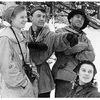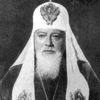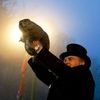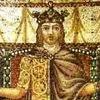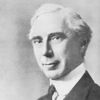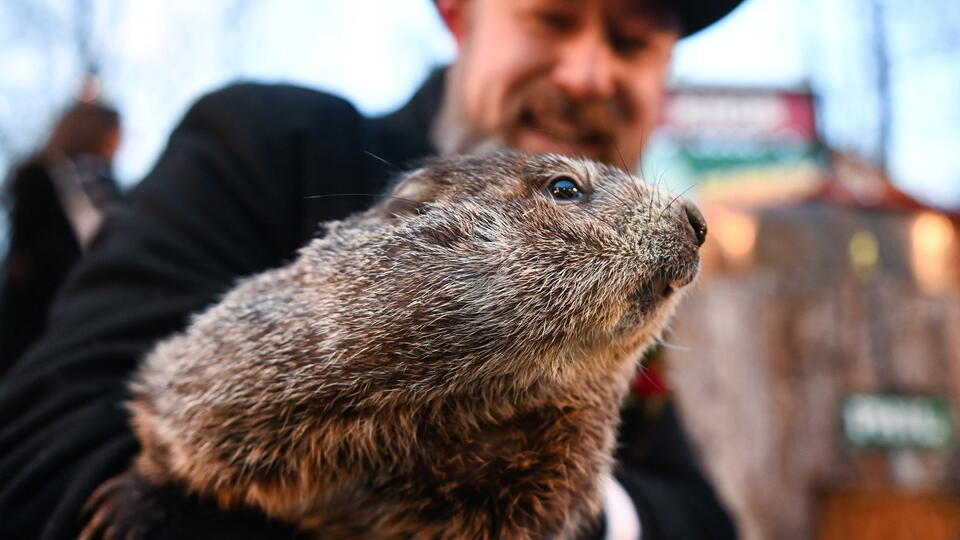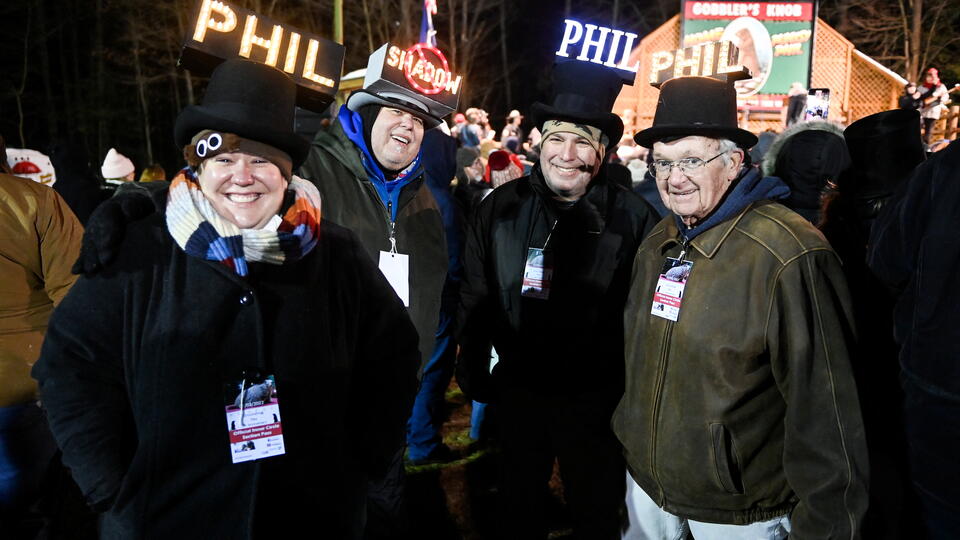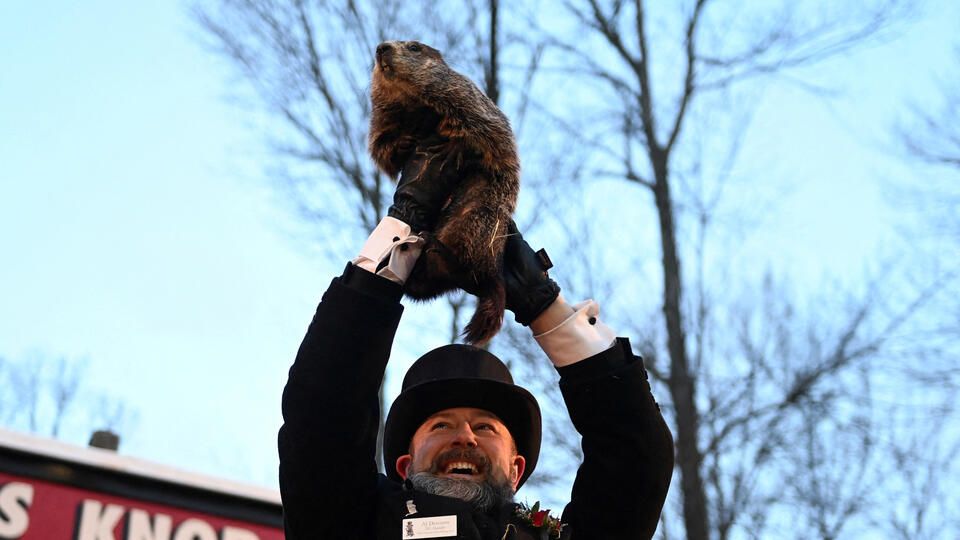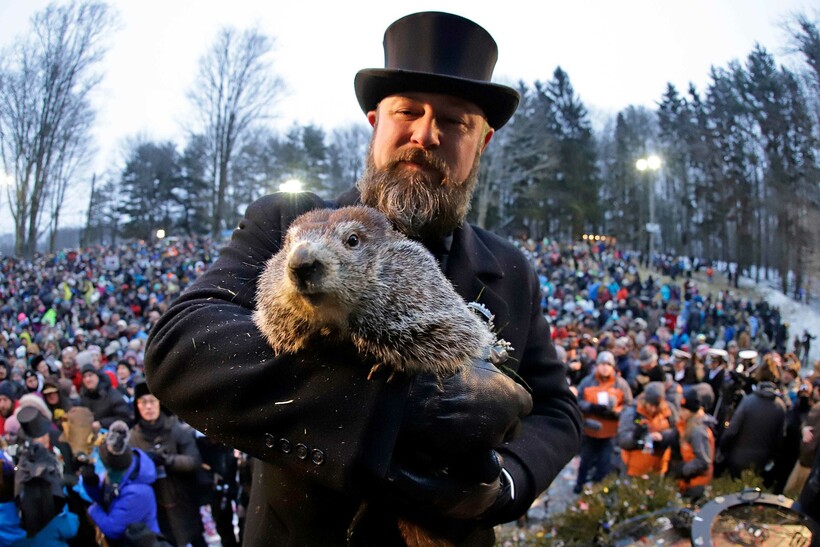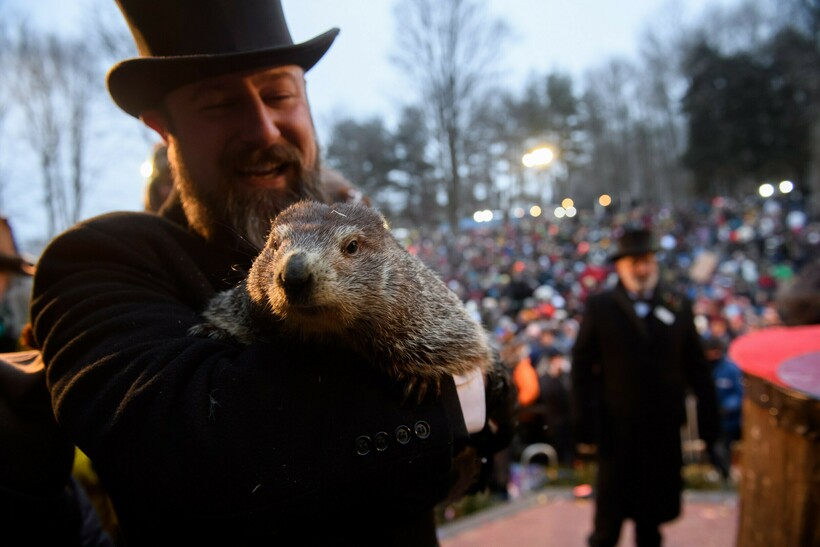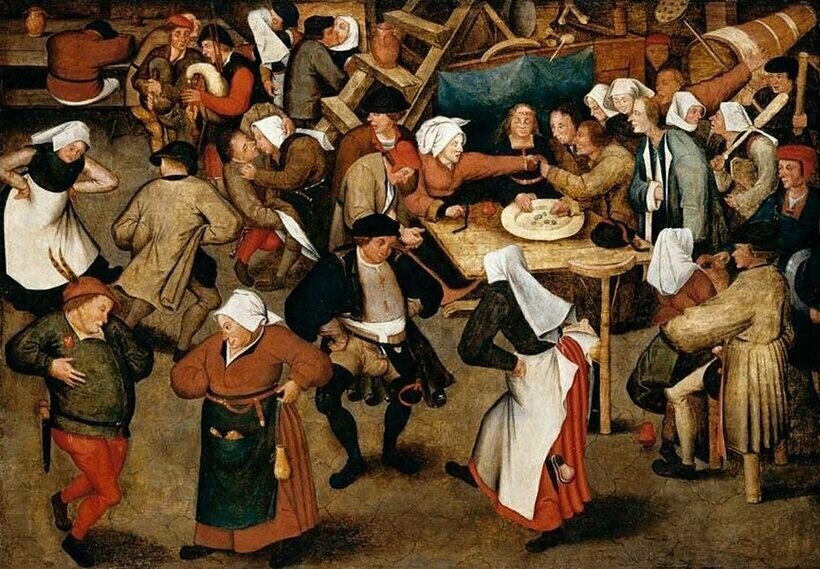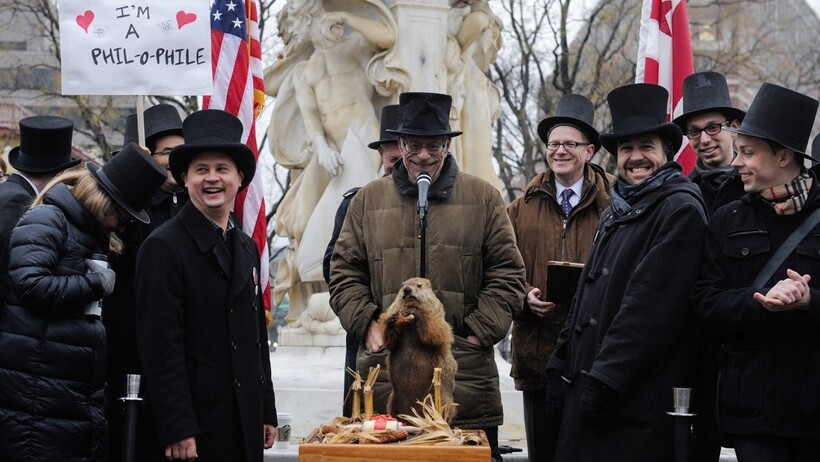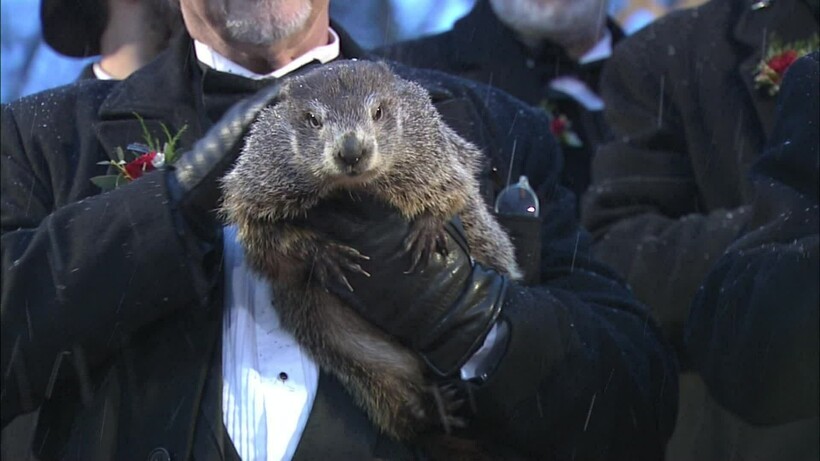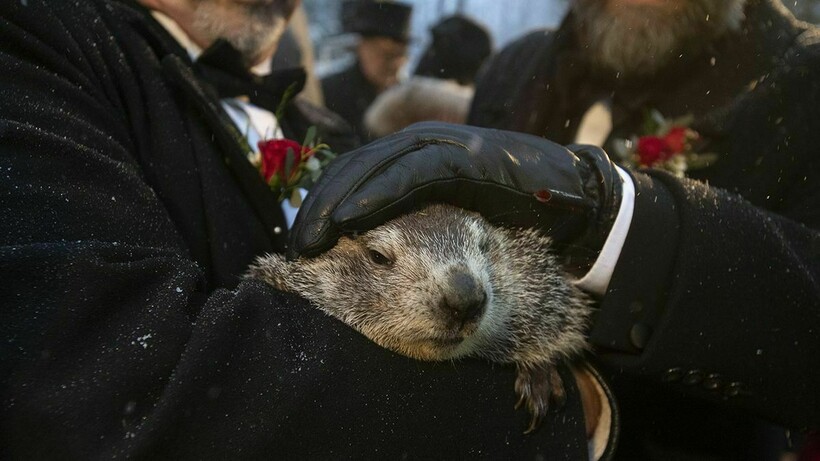День сурка (Groundhog Day) — традиционный народный праздник в Канаде и США, отмечаемый ежегодно 2 февраля. Считается, что в этот день нужно наблюдать за сурком, вылезающим из своей норы, и по его поведению можно судить о близости наступления весны.
Если день пасмурный, сурок не видит своей тени и спокойно покидает нору — зима скоро закончится, и весна в этот год ожидается ранняя. Если же день солнечный, сурок видит свою тень и прячется обратно в нору — будет еще шесть недель зимы. В некоторых городах и поселениях США и Канады в этот день проводятся фестивали, посвященные местным метеорологическим суркам, собирающие многочисленных туристов.
История возникновения праздника уходит корнями в очень давние времена, когда 2 февраля по Григорианскому календарю христианами Европы стало отмечаться Сретение Господне. Уже тогда погоду именно в этот день считали ответственной за характер приближающегося начала долгожданной весны. В Северной Америке до сих пор популярна старая шотландская поговорка: If Candlemas Day is bright and clear, there’ll be two winters in the year (Если в день Сретения ясно и безоблачно — быть двум зимам в году).
Традиция людей перекладывать ответственность за долгосрочные прогнозы погоды на «братьев наших меньших» начиналась еще в Древнем Риме, где 2 февраля ежегодно отмечался День ежа. Метеорологический прогноз в этот день строился по поведению разбуженного ежа, который видел или не видел свою тень. Жители Западной Европы сохраняли эту традицию и в более поздние периоды, а переселенцы из их числа в Северную Америку в свое время наряду с другими традициями захватили с собой и ее. По ту сторону океана, где ежи не водились, роль ответственного метеоролога перешла к сурку.
В наши дни насчитывается семь наиболее известных в мире сурков-метеорологов: Фил из Панксутони (Punxsutawney Phil), Уайртонский Вилли (Wiarton Willie), Чак из Стейтен-Айлендского зоопарка (Staten Island Chuck), Шубинакадский Сэм (Shubenacadie Sam), Бальзакский Билли (Balzac Billy), Сурок Джимми (Jimmy the Groundhog) и Генерал Беарегард Ли (General Beauregard Lee).
Сурок, живущий на Индюшачьей Горке местечка Панксутони, в горах Пенсильвании (США), — самый первый официальный сурок-метеоролог. Вот уже более ста тридцати лет, начиная с 1887 года, люди следят за прогнозами пенсильванского сурка. В честь этого события в штате проводится ежегодный фестиваль, ставший всемирно известным после выхода фильма «День сурка», звездой которого явился сурок по кличке Фил — самый знаменитый «грызун-синоптик» в Америке.
-
Праздники
-
США
-
Праздники в феврале
-
Какой праздник 2 февраля
Когда отмечают День сурка День сурка, о котором в нашей стране многие узнали по одноименному фильму, празднуется каждый год во…
2 февраля день в истории
-
1999 год — президентом Венесуэлы избран Уго Чавес
-
1977 год — родиалсь Шакира — колумбийская певица, модель, танцовщица, музыкальный продюсер
-
1959 год — произошла загадочная и до сих пор не раскрытая гибель группы туристов (9 человек) под руководством Игоря Дятлова, совершавших поход в горы на Северном Урале
-
1945 год — на Поместном соборе Патриаршей Церкви Патриархом Московским и всея Руси избран Алексий I (Симанский)
-
1943 год — Президиум Верховного Совета СССР утвердил медали «Партизану Отечественной Войны» I и II степени
-
1892 год — американский изобретатель Уильям Пейнтер запатентовал металлическую пробку для бутылок, которая используется до сих пор
-
1886 год — в США впервые стали официально праздновать День сурка
-
1701 год — вышел указ Петра I о строительстве на Ладожском озере шести кораблей, что послужило началом Балтийского флота
-
962 год — императором Священной Римской империи стал Оттон-I
2 февраля родились:
-
1935 год — родился Евгений Велихов — советский и российский физик-теоретик, профессор, педагог
-
1904 год — родился Валерий Чкалов — советский летчик-испытатель. Герой Советского Союза
-
1904 год — родилась Лариса Александровская — белорусская советская оперная певица, общественный деятель. Народная артистка СССР (1940)
-
1901 год — родился Яша Хейфец — американский скрипач еврейского происхождения. Считается одним из величайших скрипачей XX века
-
1885 год — родился Михаил Фрунзе — советский государственный и военный деятель, революционер, военный теоретик
-
1883 год — родился Михаил Гнесин — русский и советский композитор, музыкально-общественный деятель, педагог
-
1882 год — родился Джеймс Джойс — популярный ирландский поэт и писатель
-
1875 год — родился Фриц Крейслер — австрийский скрипач и композитор
-
1829 год — родился Альфред Брем — немецкий ученый-зоолог и путешественник
2 февраля умерли:
-
1989 год — умер Юрий Богатырев — советский актер театра и кино. Народный артист РСФСР (1988)
-
1970 год — умер Бертран Рассел — британский философ, математик и общественный деятель
-
1956 год — умер Петр Кончаловский — русский, советский живописец. Народный художник РСФСР (1946)
-
1942 год — умер Даниил Хармс — русский советский писатель и поэт
-
1940 год — умер Всеволод Мейерхольд — русский советский театральный режиссер, актер и педагог. Народный артист РСФСР (1923)
-
1939 год — умер Владимир Шухов — русский ученый, инженер, архитектор, изобретатель
-
1907 год — умер Дмитрий Менделеев — русский ученый, химик, физик, метеоролог, педагог. Открыл периодический закон химических элементов
По странам
По группам
Каждый год 2 февраля в США и Канаде проходит необычный праздник. Его называют Днём сурка, и неслучайно именно эта дата посвящена пушистому зверьку. В этот день сурки выходят из нор, а люди могут предсказывать погоду в ближайшее время по их поведению.
Говорят, что если в День сурка виновник праздника увидит свою тень, то он снова спрячется в норку, ведь холода продлятся достаточно долго. А вот если сурок решит выйти наружу, стоит ждать скорой весны. Какова же история Дня сурка? И что за традиции и поверья связаны с ним?
История Дня сурка
Не только в Америке, но и у самых разных народов, в самых разных странах издавна было принято предсказывать погоду по поведению животных. Традиция эта существовала едва ли не с первобытных времён, когда человек уже научился замечать связь между природными явлениями и поведением птиц и зверей.
Кстати в далёком прошлом в Древнем Риме народ праздновал День ежа, который также приходился на 2 февраля. А вот у германских племён вестником весны считались енот и барсук.
В США и Канаде традиция эта появилась вместе с переселенцами, прибывшими из Европы. Вот только отыскать ежей и барсуков было непросто, а вести наблюдение за медведями решался далеко не каждый. Именно поэтому народ решил сделать предсказателями погоды сурков, которых в ту пору в Северной Америке было немало.
В 1886 году День сурка был утверждён официально. Первые празднования прошли в небольшом городе Панксатони, где через несколько лет появился Клуб Сурка, члены которого стремились развивать традиции этого торжества.
Сурок – знаменитость из Америки
Самым знаменитым сурком общества стал зверёк, названный Филом. Удивительно, что на протяжении многих лет сурок выглядит здоровым и молодым, ежегодно предсказывая погоду. Как заявляют члены Клуба Сурка, они каждое лето дают животному выпить особый эликсир, благодаря которому жизнь зверя продлевается, а здоровье становится год от года лишь крепче.
У сурка, предсказывающего погоду, есть собственные апартаменты и даже социальное довольствие.
До 1990-х годов на День сурка в США приезжало несколько тысяч туристов, однако после выхода одноимённого фильма многое изменилось. Сегодня этот праздник пользуется огромной популярностью, а число его гостей достигло нескольких десятков тысяч.
День 2 (15) февраля стал особенным для христиан разных уголков мира. Это Сретение Господне. Для определения грядущей погоды этот день выбран неспроста. В старину шотландские племена поговаривали, что если на Сретение ярко светит солнце, то быть “двум зимам в году”.
В Белоруссии на Сретение о погоде говорило поведение медведей. Как рассказывают белорусские поверья, если в этот день медведица выйдет из берлоги и заметить свою тень, то тут же уйдёт обратно.
Подобные приметы стали использовать и в День сурка. Жители США верят, что если 2 февраля день будет солнечным и ясным, то скоро наступят сильные холода, а зимние морозы снова вернутся. Если же погода не радует солнцем, сурок не видит тени, то можно готовиться к скорому потеплению.
Популярность Дня сурка позволила традициям этого дня выйти за пределы города Панксатони. Сегодня истории и миру известны целых семь сурков-метеорологов. К ним относятся Панксатонский Фил, Бальзакский Билли, Виартонский Вилли и другие. Конечно, самым известным остаётся Фил, живущий на Индюшачьей горке в Пенсильвании.
Традиции празднования
Празднование Дня сурка уже много лет проходит по установленной схеме, связанной со старинными традициями. Ранним утром множество паломников собирается неподалёку от фермы, где и обитает знаменитый Фил.Рядом с его норой уже обустроена сцена, куда поднимаются президент и вице-президенты Клуба Сурка. Они приветствуют собравшихся и рассказывают об истории этого праздника.
Важной миссией представителей Клуба и гостей торжества становится задача разбудить сурка. Когда людям это удаётся, зверь либо выбегает из норы, либо выглядывает и снова прячется в неё.Как правило, в пасмурную погоду сурок спокойно выбегает из норки. Большая ответственность возложена и на внутреннего президента Клуба Сурка. Он должен взять на руки животное и выслушать его, после чего “перевести” предсказание и донести его всем собравшимся.
После публичного оглашения прогноза все присутствующие могут расслабиться – официальная часть праздника позади. Теперь начинаются всевозможные конкурсы, гуляния и развлечения. Доброй традицией стала трансляция по телевидению фильма “День сурка”, выступления комедиантов.От себя хочу заметить, что вообще День сурка – праздник крайне несерьёзный, а потому на нём всегда есть место шуткам и веселью. Кроме того, День сурка позволяет несколько приобщиться к истории.
Праздник, что некогда был совсем незначительным явлением, местным мероприятием, сегодня собирает тысячи гостей и туристов из разных уголков мира. Именно знаменитый сурок превратил предсказания в особое торжество.
День сурка – весёлый праздник, что в наше время проходит в США и Канаде. Почитателями знаменитых сурков-метеорологов в мире немало, и это явно показывает число паломников на мероприятии. Надо сказать, что празднование Дня сурка выглядит достаточно комично, но предсказания зверька практически всегда сбываются. Именно так сурок доказывает нам, что мы, как и наши далёкие предки, живём в непосредственной связи с природой и её явлениями.
| Groundhog Day | |
|---|---|

Groundhog Day 2005 in Punxsutawney, Pennsylvania |
|
| Observed by | United States Canada |
| Type | Cultural |
| Significance | Predicts the arrival of spring |
| Celebrations | Announcing whether a groundhog sees its shadow after it emerges from its burrow |
| Date | February 2 |
| Frequency | Annual |
| Related to | Candlemas |
Groundhog Day (Pennsylvania German: Grund’sau dåk, Grundsaudaag, Grundsow Dawg, Murmeltiertag; Nova Scotia: Daks Day)[1] is a popular North American tradition observed in the United States and Canada on February 2. It derives from the Pennsylvania Dutch superstition that if a groundhog emerges from its burrow on this day and sees its shadow due to clear weather, it will retreat to its den, and winter will go on for six more weeks; if it does not see its shadow because of cloudiness, spring will arrive early.
While the tradition remains popular in the 21st century, studies have found no consistent association between a groundhog seeing its shadow and the subsequent arrival time of spring-like weather.[2]
The weather lore was brought from German-speaking areas where the badger (German: Dachs) is the forecasting animal. This appears to be an enhanced version of the lore that clear weather on the Christian festival of Candlemas forebodes a prolonged winter.
The Groundhog Day ceremony held at Punxsutawney in western Pennsylvania, centering on a semi-mythical groundhog named Punxsutawney Phil, has become the most frequently attended ceremony. Grundsow Lodges in Pennsylvania Dutch Country in the southeastern part of the state observe the occasion as well. Other cities in the United States and Canada also have adopted the event.
History[edit]
Origins[edit]
The Pennsylvania Dutch were immigrants from German-speaking areas of Europe. The Germans had a tradition of marking Candlemas (February 2) as «Badger Day» (Dachstag), on which if a badger emerging from its den encountered a sunny day, thereby casting a shadow, it presaged four more weeks of winter.
Germany[edit]
Candlemas is a primarily Catholic festival but also known in the German Protestant (Lutheran) churches. In folk religion, various traditions and superstitions continue to be linked with the holiday, although this was discouraged by the Protestant Reformers in the 16th century.[3] Notably, several traditions akin to weather lores use the weather at Candlemas to predict the start of spring.
The weather-predicting animal on Candlemas usually was the badger, although regionally the animal was the bear or the fox.[4] The original weather-predicting animal in Germany had been the bear, another hibernating mammal, but when they grew scarce, the lore became altered.[5]
Similarity to the groundhog lore has been noted for the German formula: Sonnt sich der Dachs in der Lichtmeßwoche, so geht er auf vier Wochen wieder zu Loche («If the badger sunbathes during Candlemas-week, for four more weeks he will be back in his hole»).[a][6] A slight variant is found in a collection of weather lore (Bauernregeln, lit. «farmers’ rules») printed in Austria in 1823.[7]
Groundhog as badger[edit]
The Pennsylvanians maintained the same tradition as the Germans on Groundhog Day, except that winter’s spell would be prolonged for six weeks instead of four.[8] For the Pennsylvania Dutch, the badger became the dox, which in Deitsch referred to «groundhog».[b][9][10]
The standard term for «groundhog» was grun’daks (from German dachs), with the regional variant in York County being grundsau, a direct translation of the English name, according to a 19th-century book on the dialect.[11] The form was a regional variant according to one 19th-century source.[11] However, the weather superstition that begins Der zwet Hær’ning is Grund’sau dåk. Wânn di grundsau îr schâtte sent… («February second is Groundhog day. If the groundhog sees its shadow…») is given as common to all fourteen counties in Dutch Pennsylvania Country, in a 1915 monograph.[c][12]
In The Thomas R. Brendle Collection of Pennsylvania German Folklore, Brendle preserved the following lore from the local Pennsylvania German dialect:
Wann der Dachs sei Schadde seht im Lichtmess Marye, dann geht er widder in’s Loch un beleibt noch sechs Woche drin. Wann Lichtmess Marye awwer drieb is, dann bleibt der dachs haus un’s watt noch enanner Friehyaahr. (When the groundhog sees his shadow on the morning of February 2, he will again go into his hole and remain there for six weeks. But if the morning of February 2 is overcast, the groundhog will remain outside and there will be another spring.)[13]
The form grundsow has been used by the lodge in Allentown and elsewhere.[14] Brendle also recorded the name «Grundsaudag» (Groundhog day in Lebanon County) and «Daxdaag» (Groundhog day in Northampton County).[15]
Victor Hugo, in «Les Misérables,» (1864) discusses the day as follows:
«…it was the second of February, that ancient Candlemas-day whose treacherous sun, the precursor of six weeks of cold, inspired Matthew Laensberg with the two lines, which have deservedly become classic:
‘Qu’il luise ou qu’il luiserne,
L’ours rentre en sa caverne.’
(Let it gleam or let it glimmer,
The bear goes back into his cave.)»
– Hugo, Victor. «Les Misérables.» Trans. Fahnestock and MacAfee, based on Wilbour. Signet Classics, NY, 1987. p. 725.
Bear-rat[edit]
The groundhog was once also known by the obsolete Latin alias Arctomys monax. The genus name signified «bear-rat».[16][17] The European marmot is of the same genus and was formerly called Arctomys alpinus. It was speculated that the European counterpart might have lore similar to the groundhog attached to it.[16][d]
Simpler Candlemas lore[edit]
The German version, with the introduction of the badger (or other beasts) was an expansion on a more simple tradition that if the weather was sunny and clear on Candlemas Day people expected winter to continue.[8] The simpler version is summarized in the English (Scots dialect) couplet that runs «If Candlemas is fair and clear / There’ll be twa winters in the year»,[e][f] with equivalent phrases in French and German.[19] And the existence of a corresponding Latin couplet has been suggested as evidence of the great antiquity of this tradition.[g][19]
The use of candles on the Christian Candlemas was inspired by the Roman rite for the goddess Februa, in which a procession of candles was done on February 2, according to Yoder. The Roman calendar, in turn, had Celtic origins. Candlemas concurs with Imbolc, one of the Celtic ‘cross-quarter days’, the four days which marked the midpoints between solstice and equinox.[21][20]
British and Gaelic calendars[edit]
Scholar Rhys Carpenter in 1946 emphasized that the Badger Day tradition was strong in Germany, but absent in the British Isles, and he referred to this as a reason that the U.S. Groundhog Day was not brought by immigrants from these places.[22]
There did exist a belief among Roman Catholics in Britain that the hedgehog predicted the length of winter, or so it has been claimed, but without demonstration of its age, in a publication by the Scotland-born American journalist Thomas C. MacMillan in 1886,[19] and American writer/journalist Samuel Adams Drake’s book published in 1900.[23][h]
In the Gaelic calendar of Ireland, Scotland and the Isle of Man, Brigid’s Day (February 1) is a day for predicting the weather.[24][25] While in Scotland the animal that heralds spring on this day is a snake,[i] and on the Isle of Man a large bird,[27] in Ireland folklorist Kevin Danaher records lore of hedgehogs being observed for this omen:
In Irish folk tradition St. Brighid’s Day, 1 February, is the first day of Spring, and thus of the farmer’s year. … To see a hedgehog was a good weather sign, for the hedgehog comes come out of the hole in which he has spent the winter, looks about to judge the weather, and returns to his burrow if bad weather is going to continue. If he stays out, it means that he knows the mild weather is coming.[24]
Pennsylvania[edit]
The observance of Groundhog Day in the United States first occurred in German communities in Pennsylvania, according to known records. The earliest mention of Groundhog Day is an entry on February 2, 1840, in the diary of James L. Morris of Morgantown, in Pennsylvania Dutch Country, according to the book on the subject by Don Yoder. This was a Welsh enclave but the diarist was commenting on his neighbors who were of German stock.[j][k][20][28]
Punxsutawney beginnings[edit]
The first reported news of a Groundhog Day observance was arguably made by the Punxsutawney Spirit newspaper of Punxsutawney, Pennsylvania, in 1886:[l] «up to the time of going to press, the beast has not seen its shadow». However, it was not until the following year in 1887 that the first Groundhog Day considered «official» was commemorated there,[29] with a group making a trip to the Gobbler’s Knob part of town to consult the groundhog. People have gathered annually at the spot for the event ever since.[30][18]
Clymer Freas (1867–1942)[m] who was city editor at the Punxsutawney Spirit is credited as the «father» who conceived the idea of «Groundhog Day».[31][n] It has also been suggested that Punxsutawney was where all the Groundhog Day events originated, from where it spread to other parts of the United States and Canada.[33]
The Groundhog Day celebrations of the 1880s were carried out by the Punxsutawney Elks Lodge. The lodge members were the «genesis» of the Groundhog Club formed later, which continued the Groundhog Day tradition. But the lodge started out being interested in the groundhog as a game animal for food. It had started to serve groundhog at the lodge, and had been organizing a hunting party on a day each year in late summer.[34]
The chronologies given are somewhat inconsistent in the literature. The first «Groundhog Picnic» was held in 1887 according to one source,[31] but given as post-circa-1889 by a local historian in a journal. The historian states that around 1889 the meat was served in the lodge’s banquet, and the organized hunt started after that.[34]
Either way, the Punxsutawney Groundhog Club was formed in 1899, and continued the hunt and «Groundhog Feast», which took place annually in September.[35][36] The «hunt» portion of it became increasingly a ritualized formality, because the practical procurement of meat had to occur well ahead of time for marinating. A drink called the «groundhog punch» was also served.[o][37][38] The flavor has been described as a «cross between pork and chicken».[39] The hunt and feast did not attract enough outside interest, and the practice discontinued.[35]
The groundhog was not named Phil until 1961, possibly as an indirect reference to Prince Philip, Duke of Edinburgh.[40]
Punxsutawney today[edit]
The largest Groundhog Day celebration is held in Punxsutawney, Pennsylvania, where crowds as large as 40,000 gather each year[41] (nearly eight times the year-round population of the town).[42] The average draw had been about 2,000 until the 1993 film Groundhog Day, which is set at the festivities in Punxsutawney, after which attendance rose to about 10,000.[35] The official Phil is pretended to be a supercentenarian, having been the same forecasting beast since 1887.[35]
In 2019, the 133rd year of the tradition, the groundhog was summoned to come out at 7:25 am on February 2, but did not see its shadow.[43] Fans of Punxsutawney Phil awaited his arrival starting at 6:00 am, thanks to a live stream provided by Visit Pennsylvania. The live stream has been a tradition for the past several years, allowing more people than ever to watch the animal meteorologist.[44]
2021 was the 135th, and for the first time, much of the Inner Circle members were required to wear a mask. The groundhog was summoned at 7:25 am on February 2 and saw its shadow.[45] Due to the COVID-19 pandemic, the ceremony was held behind closed doors, with no fans allowed to attend.
2022 saw the 136th time of the event and the groundhog saw its shadow, predicting six more weeks of winter.[46]
Regional celebrations[edit]
United States[edit]
- Mid-Atlantic
The Slumbering Groundhog Lodge, which was formed in 1907, has carried out the ceremonies that take place in Quarryville, Pennsylvania.[47] It used to be a contending rival to Punxsutawney over the Groundhog Day fame. It employs a taxidermic specimen (stuffed woodchuck).[35]
In Southeastern Pennsylvania, Groundhog Lodges (Grundsow Lodges) celebrate the holiday with fersommlinge,[48] social events in which food is served, speeches are made, and one or more g’spiel (plays or skits) are performed for entertainment. The Pennsylvania German dialect is the only language spoken at the event, and those who speak English pay a penalty, usually in the form of a nickel, dime, or quarter per word spoken, with the money put into a bowl in the center of the table.[49]
In Milltown, New Jersey, Milltown Mel was purchased in 2008 in Sunbury, Pennsylvania, by Jerry and Cathy Guthlein, and lived in a cage in the Guthleins’ back yard.[50] Mel’s first event was at the family business, the Bronson and Guthlein Funeral Home, with later events moved to the American Legion Post, with free coffee and doughnuts served afterwards.[51][52][53][54][55] Mel died in 2021.[56][57][58])
Stonewall Jackson predicts at Space Farms Zoo and Museum.
[53]
Essex Ed the groundhog and Otis the Hedgehog predict at Turtle Back Zoo.[53]
Great Neck Greta, of Great Neck, Long Island, New York, predicted in 2020.[59][60]
Quigley, of The Hamptons (resident of the Save the Animals Rescue Foundation[61][62]), predicts at Quogue Village Fire Department.[59][63][64]
Staten Island Chuck is the stage name for the official weather-forecasting woodchuck for New York City, housed in the Staten Island Zoo.[65] In 2009, Chuck bit then-NYC-Mayor Mike Bloomberg, prompting zoo officials to quietly replace him with his daughter Charlotte. In 2014, NYC Mayor Bill de Blasio, famously dropped Charlotte during the ceremony, visibly disturbing many of the children present for the event.[66] Charlotte’s untimely death a week later prompted rumors she was killed by the fall, although the zoo later said this was unlikely to be the cause of Charlotte‘s demise.[67][68] As a result, Bill de Blasio has not participated in the tradition since.[69][67][68]
Dunkirk Dave (a stage name for numerous groundhogs that have filled the role since 1960) is the local groundhog for Western New York, handled by Bob Will, a typewriter repairman who runs a rescue shelter for groundhogs.[70][71] Will is adamant that Dunkirk Dave does not actually predict the date of spring because that is fixed by calendars, but instead predicts the harshness of the remainder of winter.[72]
French Creek Freddie is West Virginia’s resident groundhog meteorologist.[73] A resident of the West Virginia State Wildlife Center in French Creek, West Virginia, Freddie made his debut in 1978, and boasts an accuracy rate of approximately 50%.[73] On Groundhog Day, 2022, Freddie predicted six more weeks of winter, with the mayor of Buckhannon and members of the community in attendance.[74]
- Midwest
In the Midwest, Sun Prairie, Wisconsin, is the self-proclaimed «Groundhog Capital of the World».[75] This title taken in response to the Punxsutawney Spirit’s 1952 newspaper article describing Sun Prairie as a «remote two cow village buried somewhere in the wilderness…»[76] In 2015, Jimmy the Groundhog bit the ear of Mayor Jon Freund[77] and the story quickly went viral worldwide. The next day a mayoral proclamation absolved Jimmy XI of any wrongdoing.[78]
Buckeye Chuck, Ohio’s official State Groundhog, is one of two weather predicting groundhogs. He resides in Marion, Ohio.
Woodstock Willie, in Woodstock, Illinois, the shooting location for the 1993 film Groundhog Day.[79]
- The South
In Washington, D.C., the Dupont Circle Groundhog Day event features Potomac Phil, another taxidermic specimen. From his first appearance in 2012 to 2018, Phil’s spring predictions invariably agreed with those of the more lively Punxsutawney Phil, who made his predictions half an hour earlier. In addition, Phil always predicted correctly six more months of political gridlock. However, after being accused of collusion in 2018, Potomac Phil contradicted Punxsutawney Phil in 2019 and, further, predicted two more years of political insanity.[80]
Birmingham Bill, at Birmingham Zoo, was «taking a break» from predicting in 2015.[81]
In Raleigh, NC, an annual event at the North Carolina Museum of Natural Sciences includes Sir Walter Wally. According to museum officials, Wally has been correct 58% of the time vs. Punxsutawney Phil’s 39%.[82]
Elsewhere in the American South, the General Beauregard Lee makes predictions from Lilburn, Georgia (later Butts County, Georgia). The University of Dallas in Irving, Texas has boasted of hosting the second largest Groundhog celebration in the world.[83]
Canada[edit]
The day is observed with various ceremonies at other locations in North America beyond the United States.[84]
Due to Nova Scotia’s Atlantic Time Zone, Shubenacadie Sam makes the first Groundhog Day prediction in North America.[85] «Daks Day» (from the German dachs) is Groundhog Day in the dialect of Lunenburg, Nova Scotia.[1]
In French Canada, where the day is known as Jour de la marmotte, Fred la marmotte of Val-d’Espoir[86][87] has been the representative forecaster for the province of Quebec since 2009.[87][88] A study also shows that in Quebec, the marmot or groundhog (siffleux) are regarded as Candlemas weather-predicting beasts in some scattered spots, but the bear is the more usual animal.[89][p]
Wiarton Willie forecasts annually from Wiarton, Ontario.[90][91]
Balzac Billy is the «Prairie Prognosticator», a man-sized groundhog mascot who prognosticates weather on Groundhog Day from Balzac, Alberta.[92]
Nanaimo a ferry port city on Vancouver Island in British Columbia, Canada present Chopper, Marlu, and Van Isle Violet,[93] all wild[94] Vancouver Island marmots, for forecasts, via the Marmot Recovery Foundation.[95][96]
Accuracy[edit]
In Pennsylvania, Punxsutawney Phil has become a popular tradition. On February 2, people within the city will gather to find out whether or not Phil’s shadow is revealed. With that, he will allegedly determine whether spring will soon begin by not seeing his shadow, or if winter will ensue for six more weeks.
Statistics[edit]
Punxsutawney Phil’s statistics are kept by the Pennsylvania’s Groundhog Club which cares for the animal. Phil has predicted 103 forecasts for winter and just 17 for an early spring.[97] Most assessments of Phil’s accuracy have given accuracy lower than would be expected with random chance, with Stormfax Almanac giving an estimate of 39%,[98] and meteorologist Tim Roche of Weather Underground giving a 36% accuracy rate between 1969 and 2016 (a range chosen because local weather data was most reliable from 1969 onward) and a 47% record in that time span when predicting early spring.[97] The National Centers for Environmental Information, using a basic metric of above-normal temperatures for early spring and below-normal temperatures for more winter, placed Punxsutawney Phil’s accuracy at 40% for the ten-year period preceding 2019.[99] Other poor results from analysis are reported by the Farmer’s Almanac (which itself has been known for forecasts of questionable accuracy) as «exactly 50 percent» accuracy,[100] and The National Geographic Society reporting only 28% success.[101] But a Middlebury College team found that a long-term analysis of temperature high/low predictions were 70% accurate, although when the groundhog predicted early spring it was usually wrong.[102] Canadian meteorologist Cindy Day has estimated that Nova Scotia’s «Shubenacadie Sam» has an accuracy rate of about 45% compared to 25% for Wiarton Willy in Ontario.[103]
Part of the problem with pinning down an accuracy rate for the groundhog is that what constitutes an early spring is not clearly defined. Assessments of the accuracy of other groundhogs such as Staten Island Chuck do use an objective formula (in Chuck’s case, a majority of days that reach 40 °F (4 °C) in New York City between Groundhog Day and the March equinox).[104]
Pseudoscientific evaluation[edit]
Prediction based on an animal’s behavior used to be given more credence in the past when stores of food became scarce as winter progressed.[105]
One theory states that the groundhog naturally comes out of hibernation in central Pennsylvania in early February because of the increasing average temperature. Under this theory, if German settlement had been centered further north, Groundhog Day would take place at a later date.[106] However, the observed behavior of groundhogs in central New Jersey was that they mostly come out of their burrows in mid-March, regardless of Groundhog Day weather.[107]
There are several different ways of defining when spring begins, but by some common methods of doing so, the first day of spring is around March 20, which is always just under seven weeks after February 2, even in leap years. Also the idea of «spring arriving early» is a highly subjective notion which could arguably refer to almost anything, from several days to several weeks. At any rate, Groundhog Day serves as a convenient and whimsical milestone to mark the end of the darkest three months of the year (November, December, and January in the Northern Hemisphere), and bookends nicely with Halloween, the two holidays being opposite and roughly equidistant in time from the Winter Solstice, with Halloween festivities starting after sunset and taking place in the nighttime, and Groundhog Day being a celebration of sunrise and morning.[citation needed]
Similar customs[edit]
In Croatia and Serbia, Orthodox Christians have a tradition that on February 2 (Candlemas) or February 15 (Sretenje, The Meeting of the Lord), the bear will awaken from winter dormancy, and if it sees (meets) its own shadow in this sleepy and confused state, it will get scared and go back to sleep for an additional 40 days, thus prolonging the winter. Thus, if it is sunny on Sretenje, it is a sign that the winter is not over yet. If it is cloudy, it is a good sign that the winter is about to end.[108]
Similarly in Germany, on the June 27, they recognize the Seven Sleepers’ Day (Siebenschläfertag). If it rains that day, the rest of summer is supposedly going to be rainy. As well, in the United Kingdom, July 15 is known as St. Swithin’s day.[109] It was traditionally believed that, if it rained on that day, it would rain for the next 40 days and nights.[109]
Popular culture[edit]
The holiday gained more prominence with the release of the 1993 comedy film Groundhog Day with Bill Murray and Andie MacDowell.[110] The film became the 13th highest grossing of the year, with over $70 million at the box office.[111] Over time, the film became a cult classic and significantly increased awareness and attendance at Groundhog Day events.[35]
The holiday’s origins also plays a prominent role in the 1979 Rankin/Bass holiday special Jack Frost, where groundhog prognosticator Pardon-Me Pete’s shadow is actually manipulated by Jack Frost, initially so Jack could buy more time to use his wintery magic to protect January Junction from the villain, but over the years since, has become a proper agreement between the two to give Jack more time for wintery fun in exchange for Pete getting extra hibernation time.
Notes[edit]
- ^ Noted by Uwe Johnson; the formula was printed in the Voß un Haas [nds] «Fox and Hare» calendars of Mecklenburg.
- ^ «Of course everybody knows that February 2 is groundhog day. If the dox (the dialect word for groundhog) sees its shadow on this day, the belief is that six weeks of bad weather will follow».
- ^ The letter «â» is actually «a with circumflex below».
- ^ Signed «S. S. R.» of Lancaster, Pennsylvania. Note that S. S. Rathvon wrote the editorial «The Ground-Hog» and «More of the Ground-hogs» where he refers to the creature as «Old Arctomyx» in the editorial in the March 1884 issue of the Lancaster Farmer XV:3.
- ^ A couplet the same as this except «two winters» in standard English is given in Davis (1985), p. 103, alongside two other variants.
- ^ «Second Winter»[18] appears to be a neologism that paraphrases «two winters».
- ^ «Si Sol splenescat Maria purificante / Major erit glacies post festum quam fuit ante«. Note that Maria purificante or The Purification of the Blessed Virgin Mary is the reference to Candlemas day, since this is the biblical event that Candlemas is supposed to commemorate.[20]
- ^ Drake also states that the German lore about the badger predicting the winter’s duration was firmly accepted in New England. The groundhog, badger/bear, and hedgehog are all noted as paralleling each other.
- ^
Thig an nathair as an toll /
Là donn Brìde, /
Ged robh trì troighean dhen t-sneachd /
Air leac an làir.The serpent will come from the hole /
On the brown Day of Bríde, /
Though there should be three feet of snow /
On the flat surface of the ground.—[26] - ^ February 2, 1840, read: «Today the Germans say the groundhog comes out of his winter quarters and if he sees his shadow he returns in and remains there 40 days.»
- ^ Some sources stated that Morris’s entry of February 4, 1841, was the oldest. It read: «Last Tuesday, the 2nd, was Candlemas day, the day on which, according to the Germans, the Groundhog peeps out of his winter quarters and if he sees his shadow he pops back for another six weeks nap, but if the day be cloudy he remains out, as the weather is to be moderate.»[9]
- ^ Some books attribute this positively to Clymer Freas.
- ^ Also styled H. C. Freas, H. Clymer Freas, or Clymer H. Freas
- ^ Other contemporaries of Freas (his colleagues at the paper and fellow-members of the club, etc.) have been given credit for the promotion of Groundhog Day: W. O. Smith, another editor of the paper and later elected to U. S. Congress, cartoonist C. M. Payne, and John P. Cowan of the Pittsburgh Gazette.[32]
- ^ a combination of vodka, milk, eggs and orange juice, among many other ingredients.
- ^ There were beliefs in Switzerland and France that the marmot predicted the weather, according to MacMillan.[19] «S. S. R.» also speculated there might be similar lore for the European marmot, Arctomys alpinus.[16]
References[edit]
Citations[edit]
- ^ a b Poteet, Lewis J. (2004) [1988], The South Shore Phrase Book (New, revised, and expanded ed.), Hantsport: Lancelot Press, ISBN 9780595311941, archived from the original on August 2, 2020, retrieved December 26, 2017
- ^ Lewis, Tanya (February 2, 2017). «Groundhog Day: How Often Does Punxsutawney Phil Get It Right?». Live Science.
- ^ Yoder (2003), p. 42.
- ^ Yoder (2003), pp. 52–53.
- ^ Yoder (2003), p. 54.
- ^ Uwe Johnson, cited by Grambow, Jürgen (1994), «Möglichkeiten einer intellektuellen Kritik an diesem Mecklenburg», Johnson-Jahrbuch, Vandenhoeck & Ruprecht, vol. 1, p. 77, ISBN 9783525209004, archived from the original on August 2, 2020, retrieved December 25, 2017
- ^ Lewenau, Joseph Arnold Ritter von (1823), Der angewandte Fresenius; oder, Sammlung geordneter allgemeiner Witterungs- und sogenannter Bauernregeln Archived August 2, 2020, at the Wayback Machine, Vienna, J.G. Mösle, p. 20: «Wenn sich der Dachs zu Lichtmeß sonnt, so gehet er wieder auf vier Wochen in sein Loch. (If the badger is in the sun at Candlemas, he will have to go back into his hole for another four weeks)»
- ^ a b Yoder (2003), p. 52.
- ^ a b Shoemaker, Alfred L. (February 1, 1954), February Lore, vol. 5, archived from the original on August 2, 2020, retrieved December 25, 2017(download)
- ^ dachs is glossed as meaning «raccoon, groundhog, or short-legged dog» in : Lambert, Marcus Bachman (1924), «Pennsylvania-German Dictionary», Pennsylvania-German Society: 35, archived from the original on August 3, 2020, retrieved December 27, 2017
- ^ a b Haldeman, Samuel Stehman (1872), Pennsylvania Dutch: A Dialect of South German with an Infusion of English, Reformed Church Publication Board, pp. 5–6, archived from the original on August 2, 2020, retrieved December 26, 2017
- ^ Fogel, Edwin Miller (1915). Beliefs and Superstitions of the Pennsylvania Germans. Vol. 18. Philadelphia: American Germanica Press. p. 236. Archived from the original on August 2, 2020. Retrieved December 26, 2017.
- ^ Thomas R. Brendle (1995). «1337». In C. Richard Beam (ed.). The Thomas R. Brendle Collection of Pennsylvania German Folklore. Vol. 1. Historic Schaefferstown, Inc. p. 82. ISBN 1-880976-11-0.
- ^ Yoder (2003), pp. 67, 76.
- ^ Brendle p. 86
- ^ a b c S.S.R. (February 15, 1890), «Arctomyx monax», American Notes and Queries, 4: 188, archived from the original on August 2, 2020, retrieved December 24, 2017
- ^ Yoder (2003), pp. 54–57.
- ^ a b «This Is the Story Behind Groundhog Day». Time. Archived from the original on January 5, 2018. Retrieved December 21, 2017.
- ^ a b c d MacMillan, Thomas C., ed. (1886). Ground-Hog Day ― Candlemas. The Inter Ocean Curiosity Shop for the year 1885 (3 ed.). Chicago: The Inter Ocean Publishing Company. pp. 68–69. Archived from the original on August 2, 2020. Retrieved December 23, 2017.
- ^ a b c Kruesi, Margaret (Summer 2007). «Reviewed Work: Groundhog Day by Don Yoder». Journal of American Folklore. 120 (477): 367–368. JSTOR 20487565
- ^ Yoder (2003), pp. 52, 42–43.
- ^ Yoder (2003), p. 53.
- ^ Drake, Samuel Adams (1900). The Myths and Fables of To-day. Frank T. Merill (illustr.). Boston: Lee and Shepard. pp. 43–44. Archived from the original on August 2, 2020. Retrieved December 22, 2017.
- ^ a b Danaher, Kevin (1972), The Year in Ireland, Cork: Mercier, pp. 13–14, ISBN 1-85635-093-2,
In Irish folk tradition St. Brighid’s Day, 1 February, is the first day of Spring, and thus of the farmer’s year. … To see a hedgehog was a good weather sign, for the hedgehog comes come out of the hole in which he has spent the winter, looks about to judge the weather, and returns to his burrow if bad weather is going to continue. If he stays out, it means that he knows the mild weather is coming.
- ^ Minard, Antone (2012), «Imbolc», The Celts, ABC-CLIO, vol. 1, p. 444, ISBN 978-1-5988-4964-6, archived from the original on August 3, 2020, retrieved December 22, 2017
- ^ Carmichael, Alexander (1900) Carmina Gadelica: Hymns and Incantations, Ortha Nan Gaidheal, Volume I, p. 169 The Sacred Texts Archive Archived March 9, 2021, at the Wayback Machine
- ^ Briggs, Katharine (1976) An Encyclopedia of Fairies. New York, Pantheon Books. pp. 57–60. «On the Isle of Man, where She is known as Caillagh ny Groamagh, the Cailleach is said to have been seen on St. Bride’s day in the form of a gigantic bird, carrying sticks in her beak.»
- ^ Yoder (2003), pp. 49, 54, 143, diary printed in «Folklore from the Diary of James L. Morris, 1845–1646», Pennsylvania Dutchman 3:17 (February 1, 1952)»
- ^ Davis (1985), p. 110.
- ^ Davis (1985), p. 109.
- ^ a b Yoder (2003), p. 10.
- ^ Davis (1985).
- ^ Yoder (2003), Chapter II, «Punxsutawney to the World»
- ^ a b Davis (1985), p. 106.
- ^ a b c d e f Carlson, Peter (February 3, 2004). «His Moment In the Sun». The Washington Post. Vol. 23. Archived from the original on August 18, 2020. Retrieved December 24, 2017.
- ^ Yoder (2003), p. 11.
- ^ Davis (1985), p. 107.
- ^ «The Original Groundhog Day Involved Eating the Groundhog». Time. Archived from the original on February 6, 2018. Retrieved December 21, 2017.
- ^ Pittsburgh Gazette, September 27, 1903, cited by Davis (1985), p. 106, note 12.
- ^ Lucas Reilly and Austin Thompson (February 1, 2019). Why Is Punxsutawney’s Groundhog Called Phil? Archived February 3, 2019, at the Wayback Machine Mental Floss. Retrieved February 2, 2019.
- ^ Park, PhD, David (February 2, 2006). «Happy Groundhog Day to You!». Archived from the original on February 5, 2009. Retrieved February 5, 2009.
{{cite web}}: CS1 maint: bot: original URL status unknown (link) CS1 maint: multiple names: authors list (link) - ^ Yoder (2003), p. 9.
- ^ Serena McMahon. «Groundhog Day 2019: Punxsutawney Phil Predicts An Early Spring.» Archived February 2, 2019, at the Wayback Machine NPR.org. February 2, 2019. Retrieved February 2, 2019.
- ^ «What Time Does the Groundhog Come Out on Groundhog Day?». Travel + Leisure. Archived from the original on October 6, 2018. Retrieved October 5, 2018.
- ^ Ly, Laura (February 2, 2021). «Punxsutawney Phil sees his shadow and predicts six more weeks of winter». CNN. Archived from the original on February 2, 2021. Retrieved February 2, 2021.
- ^ Watts, Amanda (February 2, 2022). «Punxsutawney Phil sees his shadow — 6 more weeks of winter loom». CNN. Retrieved February 2, 2022.
- ^ Davis (1985), p. 105.
- ^ Yoder (2003), p. xii.
- ^ Rosenberger, Homer Tope (1966). The Pennsylvania Germans: 1891–1965. Lancaster, PA: Pennsylvania German Society. pp. 194–199. OCLC 1745108.
- ^ Loyer, Susan (January 28, 2016). «Milltown set for Groundhog Day celebration, with new star». MyCentralJersey.com. Retrieved December 5, 2021.
- ^ «Milltown Mel Groundhogs Day Celebration». NJ MOM. February 2, 2020. Retrieved December 5, 2021.
Start gathering outside the stage around 6:45am and join Mel’s Wranglers with buttons, noisemakers, and more. Mel will tell us his prediction around 7:20am, then go inside for free coffee and donuts!
- ^ «Bronson & Guthlein Funeral Home to American Legion». Google Maps. Retrieved December 5, 2021.
- ^ a b c «Meet New Jersey’s Weather-Forecasting Groundhogs». Best of NJ. January 25, 2016. Retrieved December 5, 2021.
- ^ Muscavage, Nick (February 1, 2019). «Groundhog Day 2019: Milltown Mel sees shadow, 6 more weeks of winter». MyCentralJersey.com. Retrieved December 5, 2021.
- ^ Chang, Kathy (February 2, 2021). «Milltown Mel optimistic despite snowstorm, predicts an early spring». centraljersey.com. Retrieved December 5, 2021.
- ^ «New Jersey’s spring-predicting Milltown Mel dies just before Groundhog Day: ‘Crossed over the rainbow bridge’«. Washington Post. ISSN 0190-8286. Retrieved February 2, 2022.
- ^ Amaral, Brian (July 28, 2015). «N.J.’s weather-predicting groundhog dies». NJ.com. NJ Advance Media. Retrieved December 5, 2021.
- ^ Loyer, Susan. «Milltown Mel, celebrity groundhog, dies». MyCentralJersey.com. Retrieved December 5, 2021.
- ^ a b Bolger, Timothy (February 2, 2021). «Holtsville Hal, Malverne Mel Predict an Early Spring on Groundhog Day». Long Island Press. Retrieved December 5, 2021.
- ^ «Local Groundhogs Disagree Over Weather Predictions». LongIsland.com. Retrieved December 5, 2021.
- ^ «LI Wildlife and Animal Rescue and Rehabilitation». Save the Animals Rescue Foundation. Retrieved December 5, 2021.
- ^ «PRESS RELEASES». quogue-library. Archived from the original on December 5, 2021. Retrieved December 5, 2021.
- ^ «‘Quigley’ The Quogue Groundhog Predicts An Early Spring». 27 East. February 3, 2020. Retrieved December 5, 2021.
‘Quigley’ visited Quogue Village Fire Department on Sunday and announced an early spring
- ^ «East End-Based Library Live Streaming Groundhog Day Celebration With Quigley The Groundhog». Hamptons.com. January 28, 2021. Retrieved December 5, 2021.
- ^ Rosenberg, Eli (February 2, 2016). «Staten Island Groundhog Makes Star Turn, This Year Without de Blasio». N.Y./Region. New York City: The New York Times. Archived from the original on February 14, 2016. Retrieved February 14, 2016.
- ^ Gay, Mara (September 25, 2014). «Staten Island Groundhog Dies Days After Mayor De Blasio Drops It» (video). Blogs: Metropolis. The Wall Street Journal. Retrieved February 3, 2015.
- ^ a b «Did Bill de Blasio Kill a Groundhog?». Snopes. Retrieved December 5, 2021.
- ^ a b Flegenheimer, Matt (September 25, 2014). «De Blasio’s Fault or Not, Fatal or Not, Groundhog Had an Early Fall». The New York Times. Retrieved December 5, 2021.
State Assemblyman Matthew J. Titone of Staten Island….do you really want to tell children Santa Claus died?
- ^ Sanders, Anna. «‘It didn’t end well’: De Blasio won’t celebrate Groundhog Day after killing Staten Island Chuck». New York Daily News. Archived from the original on January 29, 2020. Retrieved December 5, 2021.
- ^ «Punxsutawney Phil and seven other famous groundhogs you should know». Fox News. February 2, 2018. Archived from the original on February 2, 2018. Retrieved February 2, 2018.
- ^ Kirst, Sean (February 2, 2018). «Sean Kirst: For Dunkirk Dave’s caretaker, every day is Groundhog Day». The Buffalo News. Archived from the original on February 3, 2018. Retrieved February 1, 2018.
- ^ «Dunkirk Dave Is Taking Visitors Again». post-journal.com. Retrieved January 31, 2023.
- ^ a b West Virginia DNR (January 26, 2022). «French Creek Freddie Facts to Get You Ready for Groundhog Day». wvdnr.gov. Retrieved February 2, 2022.
- ^ WSAZ News Staff. «French Creek Freddie saw his shadow». WSAZ NewsChannel 3. Retrieved February 2, 2022.
- ^ Kempton, Wesley. «Pennsylvania- Not the Groundhog Capital of the World?». KOWB, AM 1290. Archived from the original on January 28, 2019. Retrieved January 27, 2019.
- ^ «Altoona Mirror Newspaper Archives, Jan 26, 1952». newspaperarchive.com. January 26, 1952. Archived from the original on January 27, 2019. Retrieved January 27, 2019.
- ^ «Jimmy the Groundhog bites Sun Prairie mayor». Archived from the original on September 30, 2018. Retrieved January 27, 2019 – via YouTube.
- ^ «Sun Prairie mayor pardons Jimmy the Groundhog». Action Reporter Media. Archived from the original on April 17, 2019. Retrieved January 27, 2019.
- ^ Groundhog Days in Woodstock, IL
- ^ (1) Dingfelder, Sadie (February 1, 2018). «A Groundhog Day scandal? Potomac Phil denies rumors of collusion». Express. The Washington Post. Archived from the original on February 4, 2019. Retrieved February 3, 2019.
(2) Hedgpeth, Dana (February 2, 2018). «D.C.’s groundhog makes his prediction — 6 more weeks of winter». The Washington Post. Archived from the original on April 24, 2019. Retrieved February 3, 2019.
(3) Pointer, Jack (February 2, 2018). «WATCH: DC’s least-animated pundit offers some shadowy predictions». Washington, D.C.: WTOP. Archived from the original on February 4, 2019. Retrieved February 3, 2019.
(4) Alvarez, Alejandro (February 2, 2019). «Potomac Phil defies Punxsutawney with prediction of his own». Washington, D.C.: WTOP. Archived from the original on February 4, 2019. Retrieved February 3, 2019.
(4) GW Hatchet Video (February 2, 2019). «Potomac Phil predicts long winter at Dupont Circle Groundhog Day celebration». Archived from the original on February 3, 2019. Retrieved February 3, 2019 – via YouTube. - ^ Sutton, Amber. «Groundhog Day 2015: From Punxsutawney Phil to Milltown Mel, predictions from around the country». NOLA.com. Retrieved December 5, 2021.
- ^ WRAL (February 2, 2018). «No more winter: Sir Walter Wally predicts early spring». WRAL.com. Archived from the original on February 2, 2018. Retrieved February 2, 2019.
- ^ Colleges in the Midwest: Compare Colleges in Your Region (24 ed.). Peterson’s. 2009. p. 298. ISBN 9780768926903. Archived from the original on January 3, 2014. Retrieved February 1, 2013.
- ^ Yoder (2003), p. 33.
- ^ «Shubenacadie Sam prepping for Groundhog Day». King’s County Register. January 30, 2014. Archived from the original on February 20, 2014. Retrieved February 20, 2014.
- ^ «Groundhog Day: Quebec groundhog disagrees with Shubenacadie Sam, Wiarton Willie». The Gazette. Montreal, CA. February 2, 2012. Archived from the original on February 5, 2012.
- ^ a b «Le jour de la marmotte, science ou folklore?». Radio-Canada. February 2, 2017. Archived from the original on February 4, 2017. Retrieved December 26, 2015.
- ^ «Fred la marmotte : encore six semaines d’hiver!». Radio-Canada. February 2, 2015. Archived from the original on February 3, 2015. Retrieved February 2, 2015.
la marmotte officielle du Québec
- ^ Rodrigue, Denise (1983). Le cycle de Pâques au Québec et dans l’Ouest de la France. Presses Université Laval. pp. 34, 36. ISBN 9782763769035. Archived from the original on August 2, 2020. Retrieved December 24, 2017.
- ^ «Hopeful Canadians look to Groundhog Day for predictions of an early spring». Canadian Press. February 2, 2014. Archived from the original on February 27, 2014. Retrieved February 20, 2014.
- ^ Wiarton Willie Festival – Wiarton, Ontario
- ^ Griwkowsky, Catherine (February 2, 2012). «Balzac Billy’s legacy casts a long shadow». Edmonton Sun. Sun Media. Archived from the original on March 4, 2016. Retrieved February 3, 2021.
- ^ «Van Isle marmots bundling up for prolonged winter, regular forecaster misses annual assignment». NanaimoNewsNOW. Retrieved December 5, 2021.
Violet lives at Mount Washington but had a malfunction in her tracker battery so members of the foundation haven’t been able to keep tabs on her since the summer.
- ^ Letterio, Amandalina (February 2, 2021). «Vancouver Island marmots predict a longer winter — BC News». castanet.net. Retrieved December 5, 2021.
- ^ «Van Isle groundhog Violet delivers her 2020 Groundhogs Day Prediction – The Vancouver Island Marmot Recovery Foundation». marmots.org. Retrieved December 5, 2021.
- ^ «B.C.’s own groundhog Van Isle Violet predicts long winter». INFOnews. Retrieved December 5, 2021.
- ^ a b «How Accurate Are Punxsutawney Phil’s Groundhog Day Forecasts?». Live Science. Archived from the original on December 22, 2017. Retrieved December 21, 2017.
- ^ Stormfax. «Groundhog Day History from Stormfax® 2016». www.stormfax.com. Archived from the original on November 29, 2014. Retrieved February 18, 2016.
- ^ Groundhog Day forecasts and climate history Archived February 2, 2019, at the Wayback Machine. National Centers for Environmental Prediction (February 2, 2019). Retrieved February 2, 2019.
- ^ Thomas, R. B. (1998), The Farmer’s Almanac, p. 67, cited in Aaron et al. (2001), p. 28
- ^ Allison, Christine (1995), 365 days of gardening, p. 353, cited in Aaron et al. (2001), p. 28
- ^ Aaron, Michael A.; Boyd, Brewster B. Jr.; Curtis, Melanie J.; Sommers, Paul M. (January 2001). «Punxsutawney’s Phenomenal Phorecaster» (PDF). The College Mathematics Journal. 32 (1): 26–29. doi:10.2307/2687216. JSTOR 2687216..
- ^ «Tom Ayers, «Shubenacadie Sam unlikely to see his shadow», Chronicle Herald, January 31, 2018a». Archived from the original on February 3, 2018. Retrieved February 3, 2018.
- ^ C, Diane (February 2, 2017). «Groundhog Day 2017 results: Staten Island Chuck calls for an early spring». silive.com. Archived from the original on February 2, 2019. Retrieved February 1, 2019.
- ^ Lewis, Danny. «A Short History of Groundhog Day». Smithsonian. Archived from the original on December 22, 2017. Retrieved December 21, 2017.
- ^ Coin, Glenn (February 1, 2015). Groundhog Day 2016: Do you trust a rodent to predict the weather? Archived February 2, 2016, at the Wayback Machine Syracuse Post-Standard. Retrieved February 1, 2016.
- ^ «Happy Groundhog Day … again?». caucus99percent.com. February 2, 2017. Archived from the original on November 7, 2017. Retrieved October 31, 2017.
- ^ Lodge, Olive (1942), Peasant Life in Yugoslavia, Ams Press Inc, p. 142, ISBN 9780404165826, archived from the original on August 2, 2020, retrieved December 24, 2017
- ^ a b Keever, Homer M. (1976), Iredell, Piedmont County, Iredell County Bicentennial Commission, p. 26, archived from the original on August 2, 2020, retrieved December 24, 2017
- ^ Groundhog Day (1993) movie on IMDb
- ^ «1993 Worldwide Grosses». Box Office Mojo. Archived from the original on January 13, 2013. Retrieved February 2, 2019.
Sources[edit]
- Davis, Christopher R. (April 1985), «Totemism and Civic Boosterism in Punxsutawney, Pennsylvania, 1899–1909», The Western Pennsylvania Historical Magazine, 68 (2), archived from the original on December 24, 2017, retrieved December 23, 2017
- Yoder, Don (2003). Groundhog Day. Mechanicsburg, Pennsylvania: Stackpole Books. ISBN 0811700291. OCLC 52542605. Archived from the original on August 3, 2020. Retrieved December 22, 2017.
Further reading[edit]
- Old, W. C., and P. Billin-Frye (2004). The Groundhog Day Book of Facts and Fun. Morton Grove, IL: Albert Whitman.
- Pulling, A. F. (2001). Around Punxsutawney. Charleston, S.C.: Arcadia.
External links[edit]
- Groundhog Days Around the World
- Official Punxsutawney Groundhog Club
- Official Punxsutawney Phil Souvenir Shop, Punxsutawney, PA.
- A Holiday for Everyone — Punxsutawney Groundhog Day Short Documentary
| Groundhog Day | |
|---|---|

Groundhog Day 2005 in Punxsutawney, Pennsylvania |
|
| Observed by | United States Canada |
| Type | Cultural |
| Significance | Predicts the arrival of spring |
| Celebrations | Announcing whether a groundhog sees its shadow after it emerges from its burrow |
| Date | February 2 |
| Frequency | Annual |
| Related to | Candlemas |
Groundhog Day (Pennsylvania German: Grund’sau dåk, Grundsaudaag, Grundsow Dawg, Murmeltiertag; Nova Scotia: Daks Day)[1] is a popular North American tradition observed in the United States and Canada on February 2. It derives from the Pennsylvania Dutch superstition that if a groundhog emerges from its burrow on this day and sees its shadow due to clear weather, it will retreat to its den, and winter will go on for six more weeks; if it does not see its shadow because of cloudiness, spring will arrive early.
While the tradition remains popular in the 21st century, studies have found no consistent association between a groundhog seeing its shadow and the subsequent arrival time of spring-like weather.[2]
The weather lore was brought from German-speaking areas where the badger (German: Dachs) is the forecasting animal. This appears to be an enhanced version of the lore that clear weather on the Christian festival of Candlemas forebodes a prolonged winter.
The Groundhog Day ceremony held at Punxsutawney in western Pennsylvania, centering on a semi-mythical groundhog named Punxsutawney Phil, has become the most frequently attended ceremony. Grundsow Lodges in Pennsylvania Dutch Country in the southeastern part of the state observe the occasion as well. Other cities in the United States and Canada also have adopted the event.
History[edit]
Origins[edit]
The Pennsylvania Dutch were immigrants from German-speaking areas of Europe. The Germans had a tradition of marking Candlemas (February 2) as «Badger Day» (Dachstag), on which if a badger emerging from its den encountered a sunny day, thereby casting a shadow, it presaged four more weeks of winter.
Germany[edit]
Candlemas is a primarily Catholic festival but also known in the German Protestant (Lutheran) churches. In folk religion, various traditions and superstitions continue to be linked with the holiday, although this was discouraged by the Protestant Reformers in the 16th century.[3] Notably, several traditions akin to weather lores use the weather at Candlemas to predict the start of spring.
The weather-predicting animal on Candlemas usually was the badger, although regionally the animal was the bear or the fox.[4] The original weather-predicting animal in Germany had been the bear, another hibernating mammal, but when they grew scarce, the lore became altered.[5]
Similarity to the groundhog lore has been noted for the German formula: Sonnt sich der Dachs in der Lichtmeßwoche, so geht er auf vier Wochen wieder zu Loche («If the badger sunbathes during Candlemas-week, for four more weeks he will be back in his hole»).[a][6] A slight variant is found in a collection of weather lore (Bauernregeln, lit. «farmers’ rules») printed in Austria in 1823.[7]
Groundhog as badger[edit]
The Pennsylvanians maintained the same tradition as the Germans on Groundhog Day, except that winter’s spell would be prolonged for six weeks instead of four.[8] For the Pennsylvania Dutch, the badger became the dox, which in Deitsch referred to «groundhog».[b][9][10]
The standard term for «groundhog» was grun’daks (from German dachs), with the regional variant in York County being grundsau, a direct translation of the English name, according to a 19th-century book on the dialect.[11] The form was a regional variant according to one 19th-century source.[11] However, the weather superstition that begins Der zwet Hær’ning is Grund’sau dåk. Wânn di grundsau îr schâtte sent… («February second is Groundhog day. If the groundhog sees its shadow…») is given as common to all fourteen counties in Dutch Pennsylvania Country, in a 1915 monograph.[c][12]
In The Thomas R. Brendle Collection of Pennsylvania German Folklore, Brendle preserved the following lore from the local Pennsylvania German dialect:
Wann der Dachs sei Schadde seht im Lichtmess Marye, dann geht er widder in’s Loch un beleibt noch sechs Woche drin. Wann Lichtmess Marye awwer drieb is, dann bleibt der dachs haus un’s watt noch enanner Friehyaahr. (When the groundhog sees his shadow on the morning of February 2, he will again go into his hole and remain there for six weeks. But if the morning of February 2 is overcast, the groundhog will remain outside and there will be another spring.)[13]
The form grundsow has been used by the lodge in Allentown and elsewhere.[14] Brendle also recorded the name «Grundsaudag» (Groundhog day in Lebanon County) and «Daxdaag» (Groundhog day in Northampton County).[15]
Victor Hugo, in «Les Misérables,» (1864) discusses the day as follows:
«…it was the second of February, that ancient Candlemas-day whose treacherous sun, the precursor of six weeks of cold, inspired Matthew Laensberg with the two lines, which have deservedly become classic:
‘Qu’il luise ou qu’il luiserne,
L’ours rentre en sa caverne.’
(Let it gleam or let it glimmer,
The bear goes back into his cave.)»
– Hugo, Victor. «Les Misérables.» Trans. Fahnestock and MacAfee, based on Wilbour. Signet Classics, NY, 1987. p. 725.
Bear-rat[edit]
The groundhog was once also known by the obsolete Latin alias Arctomys monax. The genus name signified «bear-rat».[16][17] The European marmot is of the same genus and was formerly called Arctomys alpinus. It was speculated that the European counterpart might have lore similar to the groundhog attached to it.[16][d]
Simpler Candlemas lore[edit]
The German version, with the introduction of the badger (or other beasts) was an expansion on a more simple tradition that if the weather was sunny and clear on Candlemas Day people expected winter to continue.[8] The simpler version is summarized in the English (Scots dialect) couplet that runs «If Candlemas is fair and clear / There’ll be twa winters in the year»,[e][f] with equivalent phrases in French and German.[19] And the existence of a corresponding Latin couplet has been suggested as evidence of the great antiquity of this tradition.[g][19]
The use of candles on the Christian Candlemas was inspired by the Roman rite for the goddess Februa, in which a procession of candles was done on February 2, according to Yoder. The Roman calendar, in turn, had Celtic origins. Candlemas concurs with Imbolc, one of the Celtic ‘cross-quarter days’, the four days which marked the midpoints between solstice and equinox.[21][20]
British and Gaelic calendars[edit]
Scholar Rhys Carpenter in 1946 emphasized that the Badger Day tradition was strong in Germany, but absent in the British Isles, and he referred to this as a reason that the U.S. Groundhog Day was not brought by immigrants from these places.[22]
There did exist a belief among Roman Catholics in Britain that the hedgehog predicted the length of winter, or so it has been claimed, but without demonstration of its age, in a publication by the Scotland-born American journalist Thomas C. MacMillan in 1886,[19] and American writer/journalist Samuel Adams Drake’s book published in 1900.[23][h]
In the Gaelic calendar of Ireland, Scotland and the Isle of Man, Brigid’s Day (February 1) is a day for predicting the weather.[24][25] While in Scotland the animal that heralds spring on this day is a snake,[i] and on the Isle of Man a large bird,[27] in Ireland folklorist Kevin Danaher records lore of hedgehogs being observed for this omen:
In Irish folk tradition St. Brighid’s Day, 1 February, is the first day of Spring, and thus of the farmer’s year. … To see a hedgehog was a good weather sign, for the hedgehog comes come out of the hole in which he has spent the winter, looks about to judge the weather, and returns to his burrow if bad weather is going to continue. If he stays out, it means that he knows the mild weather is coming.[24]
Pennsylvania[edit]
The observance of Groundhog Day in the United States first occurred in German communities in Pennsylvania, according to known records. The earliest mention of Groundhog Day is an entry on February 2, 1840, in the diary of James L. Morris of Morgantown, in Pennsylvania Dutch Country, according to the book on the subject by Don Yoder. This was a Welsh enclave but the diarist was commenting on his neighbors who were of German stock.[j][k][20][28]
Punxsutawney beginnings[edit]
The first reported news of a Groundhog Day observance was arguably made by the Punxsutawney Spirit newspaper of Punxsutawney, Pennsylvania, in 1886:[l] «up to the time of going to press, the beast has not seen its shadow». However, it was not until the following year in 1887 that the first Groundhog Day considered «official» was commemorated there,[29] with a group making a trip to the Gobbler’s Knob part of town to consult the groundhog. People have gathered annually at the spot for the event ever since.[30][18]
Clymer Freas (1867–1942)[m] who was city editor at the Punxsutawney Spirit is credited as the «father» who conceived the idea of «Groundhog Day».[31][n] It has also been suggested that Punxsutawney was where all the Groundhog Day events originated, from where it spread to other parts of the United States and Canada.[33]
The Groundhog Day celebrations of the 1880s were carried out by the Punxsutawney Elks Lodge. The lodge members were the «genesis» of the Groundhog Club formed later, which continued the Groundhog Day tradition. But the lodge started out being interested in the groundhog as a game animal for food. It had started to serve groundhog at the lodge, and had been organizing a hunting party on a day each year in late summer.[34]
The chronologies given are somewhat inconsistent in the literature. The first «Groundhog Picnic» was held in 1887 according to one source,[31] but given as post-circa-1889 by a local historian in a journal. The historian states that around 1889 the meat was served in the lodge’s banquet, and the organized hunt started after that.[34]
Either way, the Punxsutawney Groundhog Club was formed in 1899, and continued the hunt and «Groundhog Feast», which took place annually in September.[35][36] The «hunt» portion of it became increasingly a ritualized formality, because the practical procurement of meat had to occur well ahead of time for marinating. A drink called the «groundhog punch» was also served.[o][37][38] The flavor has been described as a «cross between pork and chicken».[39] The hunt and feast did not attract enough outside interest, and the practice discontinued.[35]
The groundhog was not named Phil until 1961, possibly as an indirect reference to Prince Philip, Duke of Edinburgh.[40]
Punxsutawney today[edit]
The largest Groundhog Day celebration is held in Punxsutawney, Pennsylvania, where crowds as large as 40,000 gather each year[41] (nearly eight times the year-round population of the town).[42] The average draw had been about 2,000 until the 1993 film Groundhog Day, which is set at the festivities in Punxsutawney, after which attendance rose to about 10,000.[35] The official Phil is pretended to be a supercentenarian, having been the same forecasting beast since 1887.[35]
In 2019, the 133rd year of the tradition, the groundhog was summoned to come out at 7:25 am on February 2, but did not see its shadow.[43] Fans of Punxsutawney Phil awaited his arrival starting at 6:00 am, thanks to a live stream provided by Visit Pennsylvania. The live stream has been a tradition for the past several years, allowing more people than ever to watch the animal meteorologist.[44]
2021 was the 135th, and for the first time, much of the Inner Circle members were required to wear a mask. The groundhog was summoned at 7:25 am on February 2 and saw its shadow.[45] Due to the COVID-19 pandemic, the ceremony was held behind closed doors, with no fans allowed to attend.
2022 saw the 136th time of the event and the groundhog saw its shadow, predicting six more weeks of winter.[46]
Regional celebrations[edit]
United States[edit]
- Mid-Atlantic
The Slumbering Groundhog Lodge, which was formed in 1907, has carried out the ceremonies that take place in Quarryville, Pennsylvania.[47] It used to be a contending rival to Punxsutawney over the Groundhog Day fame. It employs a taxidermic specimen (stuffed woodchuck).[35]
In Southeastern Pennsylvania, Groundhog Lodges (Grundsow Lodges) celebrate the holiday with fersommlinge,[48] social events in which food is served, speeches are made, and one or more g’spiel (plays or skits) are performed for entertainment. The Pennsylvania German dialect is the only language spoken at the event, and those who speak English pay a penalty, usually in the form of a nickel, dime, or quarter per word spoken, with the money put into a bowl in the center of the table.[49]
In Milltown, New Jersey, Milltown Mel was purchased in 2008 in Sunbury, Pennsylvania, by Jerry and Cathy Guthlein, and lived in a cage in the Guthleins’ back yard.[50] Mel’s first event was at the family business, the Bronson and Guthlein Funeral Home, with later events moved to the American Legion Post, with free coffee and doughnuts served afterwards.[51][52][53][54][55] Mel died in 2021.[56][57][58])
Stonewall Jackson predicts at Space Farms Zoo and Museum.
[53]
Essex Ed the groundhog and Otis the Hedgehog predict at Turtle Back Zoo.[53]
Great Neck Greta, of Great Neck, Long Island, New York, predicted in 2020.[59][60]
Quigley, of The Hamptons (resident of the Save the Animals Rescue Foundation[61][62]), predicts at Quogue Village Fire Department.[59][63][64]
Staten Island Chuck is the stage name for the official weather-forecasting woodchuck for New York City, housed in the Staten Island Zoo.[65] In 2009, Chuck bit then-NYC-Mayor Mike Bloomberg, prompting zoo officials to quietly replace him with his daughter Charlotte. In 2014, NYC Mayor Bill de Blasio, famously dropped Charlotte during the ceremony, visibly disturbing many of the children present for the event.[66] Charlotte’s untimely death a week later prompted rumors she was killed by the fall, although the zoo later said this was unlikely to be the cause of Charlotte‘s demise.[67][68] As a result, Bill de Blasio has not participated in the tradition since.[69][67][68]
Dunkirk Dave (a stage name for numerous groundhogs that have filled the role since 1960) is the local groundhog for Western New York, handled by Bob Will, a typewriter repairman who runs a rescue shelter for groundhogs.[70][71] Will is adamant that Dunkirk Dave does not actually predict the date of spring because that is fixed by calendars, but instead predicts the harshness of the remainder of winter.[72]
French Creek Freddie is West Virginia’s resident groundhog meteorologist.[73] A resident of the West Virginia State Wildlife Center in French Creek, West Virginia, Freddie made his debut in 1978, and boasts an accuracy rate of approximately 50%.[73] On Groundhog Day, 2022, Freddie predicted six more weeks of winter, with the mayor of Buckhannon and members of the community in attendance.[74]
- Midwest
In the Midwest, Sun Prairie, Wisconsin, is the self-proclaimed «Groundhog Capital of the World».[75] This title taken in response to the Punxsutawney Spirit’s 1952 newspaper article describing Sun Prairie as a «remote two cow village buried somewhere in the wilderness…»[76] In 2015, Jimmy the Groundhog bit the ear of Mayor Jon Freund[77] and the story quickly went viral worldwide. The next day a mayoral proclamation absolved Jimmy XI of any wrongdoing.[78]
Buckeye Chuck, Ohio’s official State Groundhog, is one of two weather predicting groundhogs. He resides in Marion, Ohio.
Woodstock Willie, in Woodstock, Illinois, the shooting location for the 1993 film Groundhog Day.[79]
- The South
In Washington, D.C., the Dupont Circle Groundhog Day event features Potomac Phil, another taxidermic specimen. From his first appearance in 2012 to 2018, Phil’s spring predictions invariably agreed with those of the more lively Punxsutawney Phil, who made his predictions half an hour earlier. In addition, Phil always predicted correctly six more months of political gridlock. However, after being accused of collusion in 2018, Potomac Phil contradicted Punxsutawney Phil in 2019 and, further, predicted two more years of political insanity.[80]
Birmingham Bill, at Birmingham Zoo, was «taking a break» from predicting in 2015.[81]
In Raleigh, NC, an annual event at the North Carolina Museum of Natural Sciences includes Sir Walter Wally. According to museum officials, Wally has been correct 58% of the time vs. Punxsutawney Phil’s 39%.[82]
Elsewhere in the American South, the General Beauregard Lee makes predictions from Lilburn, Georgia (later Butts County, Georgia). The University of Dallas in Irving, Texas has boasted of hosting the second largest Groundhog celebration in the world.[83]
Canada[edit]
The day is observed with various ceremonies at other locations in North America beyond the United States.[84]
Due to Nova Scotia’s Atlantic Time Zone, Shubenacadie Sam makes the first Groundhog Day prediction in North America.[85] «Daks Day» (from the German dachs) is Groundhog Day in the dialect of Lunenburg, Nova Scotia.[1]
In French Canada, where the day is known as Jour de la marmotte, Fred la marmotte of Val-d’Espoir[86][87] has been the representative forecaster for the province of Quebec since 2009.[87][88] A study also shows that in Quebec, the marmot or groundhog (siffleux) are regarded as Candlemas weather-predicting beasts in some scattered spots, but the bear is the more usual animal.[89][p]
Wiarton Willie forecasts annually from Wiarton, Ontario.[90][91]
Balzac Billy is the «Prairie Prognosticator», a man-sized groundhog mascot who prognosticates weather on Groundhog Day from Balzac, Alberta.[92]
Nanaimo a ferry port city on Vancouver Island in British Columbia, Canada present Chopper, Marlu, and Van Isle Violet,[93] all wild[94] Vancouver Island marmots, for forecasts, via the Marmot Recovery Foundation.[95][96]
Accuracy[edit]
In Pennsylvania, Punxsutawney Phil has become a popular tradition. On February 2, people within the city will gather to find out whether or not Phil’s shadow is revealed. With that, he will allegedly determine whether spring will soon begin by not seeing his shadow, or if winter will ensue for six more weeks.
Statistics[edit]
Punxsutawney Phil’s statistics are kept by the Pennsylvania’s Groundhog Club which cares for the animal. Phil has predicted 103 forecasts for winter and just 17 for an early spring.[97] Most assessments of Phil’s accuracy have given accuracy lower than would be expected with random chance, with Stormfax Almanac giving an estimate of 39%,[98] and meteorologist Tim Roche of Weather Underground giving a 36% accuracy rate between 1969 and 2016 (a range chosen because local weather data was most reliable from 1969 onward) and a 47% record in that time span when predicting early spring.[97] The National Centers for Environmental Information, using a basic metric of above-normal temperatures for early spring and below-normal temperatures for more winter, placed Punxsutawney Phil’s accuracy at 40% for the ten-year period preceding 2019.[99] Other poor results from analysis are reported by the Farmer’s Almanac (which itself has been known for forecasts of questionable accuracy) as «exactly 50 percent» accuracy,[100] and The National Geographic Society reporting only 28% success.[101] But a Middlebury College team found that a long-term analysis of temperature high/low predictions were 70% accurate, although when the groundhog predicted early spring it was usually wrong.[102] Canadian meteorologist Cindy Day has estimated that Nova Scotia’s «Shubenacadie Sam» has an accuracy rate of about 45% compared to 25% for Wiarton Willy in Ontario.[103]
Part of the problem with pinning down an accuracy rate for the groundhog is that what constitutes an early spring is not clearly defined. Assessments of the accuracy of other groundhogs such as Staten Island Chuck do use an objective formula (in Chuck’s case, a majority of days that reach 40 °F (4 °C) in New York City between Groundhog Day and the March equinox).[104]
Pseudoscientific evaluation[edit]
Prediction based on an animal’s behavior used to be given more credence in the past when stores of food became scarce as winter progressed.[105]
One theory states that the groundhog naturally comes out of hibernation in central Pennsylvania in early February because of the increasing average temperature. Under this theory, if German settlement had been centered further north, Groundhog Day would take place at a later date.[106] However, the observed behavior of groundhogs in central New Jersey was that they mostly come out of their burrows in mid-March, regardless of Groundhog Day weather.[107]
There are several different ways of defining when spring begins, but by some common methods of doing so, the first day of spring is around March 20, which is always just under seven weeks after February 2, even in leap years. Also the idea of «spring arriving early» is a highly subjective notion which could arguably refer to almost anything, from several days to several weeks. At any rate, Groundhog Day serves as a convenient and whimsical milestone to mark the end of the darkest three months of the year (November, December, and January in the Northern Hemisphere), and bookends nicely with Halloween, the two holidays being opposite and roughly equidistant in time from the Winter Solstice, with Halloween festivities starting after sunset and taking place in the nighttime, and Groundhog Day being a celebration of sunrise and morning.[citation needed]
Similar customs[edit]
In Croatia and Serbia, Orthodox Christians have a tradition that on February 2 (Candlemas) or February 15 (Sretenje, The Meeting of the Lord), the bear will awaken from winter dormancy, and if it sees (meets) its own shadow in this sleepy and confused state, it will get scared and go back to sleep for an additional 40 days, thus prolonging the winter. Thus, if it is sunny on Sretenje, it is a sign that the winter is not over yet. If it is cloudy, it is a good sign that the winter is about to end.[108]
Similarly in Germany, on the June 27, they recognize the Seven Sleepers’ Day (Siebenschläfertag). If it rains that day, the rest of summer is supposedly going to be rainy. As well, in the United Kingdom, July 15 is known as St. Swithin’s day.[109] It was traditionally believed that, if it rained on that day, it would rain for the next 40 days and nights.[109]
Popular culture[edit]
The holiday gained more prominence with the release of the 1993 comedy film Groundhog Day with Bill Murray and Andie MacDowell.[110] The film became the 13th highest grossing of the year, with over $70 million at the box office.[111] Over time, the film became a cult classic and significantly increased awareness and attendance at Groundhog Day events.[35]
The holiday’s origins also plays a prominent role in the 1979 Rankin/Bass holiday special Jack Frost, where groundhog prognosticator Pardon-Me Pete’s shadow is actually manipulated by Jack Frost, initially so Jack could buy more time to use his wintery magic to protect January Junction from the villain, but over the years since, has become a proper agreement between the two to give Jack more time for wintery fun in exchange for Pete getting extra hibernation time.
Notes[edit]
- ^ Noted by Uwe Johnson; the formula was printed in the Voß un Haas [nds] «Fox and Hare» calendars of Mecklenburg.
- ^ «Of course everybody knows that February 2 is groundhog day. If the dox (the dialect word for groundhog) sees its shadow on this day, the belief is that six weeks of bad weather will follow».
- ^ The letter «â» is actually «a with circumflex below».
- ^ Signed «S. S. R.» of Lancaster, Pennsylvania. Note that S. S. Rathvon wrote the editorial «The Ground-Hog» and «More of the Ground-hogs» where he refers to the creature as «Old Arctomyx» in the editorial in the March 1884 issue of the Lancaster Farmer XV:3.
- ^ A couplet the same as this except «two winters» in standard English is given in Davis (1985), p. 103, alongside two other variants.
- ^ «Second Winter»[18] appears to be a neologism that paraphrases «two winters».
- ^ «Si Sol splenescat Maria purificante / Major erit glacies post festum quam fuit ante«. Note that Maria purificante or The Purification of the Blessed Virgin Mary is the reference to Candlemas day, since this is the biblical event that Candlemas is supposed to commemorate.[20]
- ^ Drake also states that the German lore about the badger predicting the winter’s duration was firmly accepted in New England. The groundhog, badger/bear, and hedgehog are all noted as paralleling each other.
- ^
Thig an nathair as an toll /
Là donn Brìde, /
Ged robh trì troighean dhen t-sneachd /
Air leac an làir.The serpent will come from the hole /
On the brown Day of Bríde, /
Though there should be three feet of snow /
On the flat surface of the ground.—[26] - ^ February 2, 1840, read: «Today the Germans say the groundhog comes out of his winter quarters and if he sees his shadow he returns in and remains there 40 days.»
- ^ Some sources stated that Morris’s entry of February 4, 1841, was the oldest. It read: «Last Tuesday, the 2nd, was Candlemas day, the day on which, according to the Germans, the Groundhog peeps out of his winter quarters and if he sees his shadow he pops back for another six weeks nap, but if the day be cloudy he remains out, as the weather is to be moderate.»[9]
- ^ Some books attribute this positively to Clymer Freas.
- ^ Also styled H. C. Freas, H. Clymer Freas, or Clymer H. Freas
- ^ Other contemporaries of Freas (his colleagues at the paper and fellow-members of the club, etc.) have been given credit for the promotion of Groundhog Day: W. O. Smith, another editor of the paper and later elected to U. S. Congress, cartoonist C. M. Payne, and John P. Cowan of the Pittsburgh Gazette.[32]
- ^ a combination of vodka, milk, eggs and orange juice, among many other ingredients.
- ^ There were beliefs in Switzerland and France that the marmot predicted the weather, according to MacMillan.[19] «S. S. R.» also speculated there might be similar lore for the European marmot, Arctomys alpinus.[16]
References[edit]
Citations[edit]
- ^ a b Poteet, Lewis J. (2004) [1988], The South Shore Phrase Book (New, revised, and expanded ed.), Hantsport: Lancelot Press, ISBN 9780595311941, archived from the original on August 2, 2020, retrieved December 26, 2017
- ^ Lewis, Tanya (February 2, 2017). «Groundhog Day: How Often Does Punxsutawney Phil Get It Right?». Live Science.
- ^ Yoder (2003), p. 42.
- ^ Yoder (2003), pp. 52–53.
- ^ Yoder (2003), p. 54.
- ^ Uwe Johnson, cited by Grambow, Jürgen (1994), «Möglichkeiten einer intellektuellen Kritik an diesem Mecklenburg», Johnson-Jahrbuch, Vandenhoeck & Ruprecht, vol. 1, p. 77, ISBN 9783525209004, archived from the original on August 2, 2020, retrieved December 25, 2017
- ^ Lewenau, Joseph Arnold Ritter von (1823), Der angewandte Fresenius; oder, Sammlung geordneter allgemeiner Witterungs- und sogenannter Bauernregeln Archived August 2, 2020, at the Wayback Machine, Vienna, J.G. Mösle, p. 20: «Wenn sich der Dachs zu Lichtmeß sonnt, so gehet er wieder auf vier Wochen in sein Loch. (If the badger is in the sun at Candlemas, he will have to go back into his hole for another four weeks)»
- ^ a b Yoder (2003), p. 52.
- ^ a b Shoemaker, Alfred L. (February 1, 1954), February Lore, vol. 5, archived from the original on August 2, 2020, retrieved December 25, 2017(download)
- ^ dachs is glossed as meaning «raccoon, groundhog, or short-legged dog» in : Lambert, Marcus Bachman (1924), «Pennsylvania-German Dictionary», Pennsylvania-German Society: 35, archived from the original on August 3, 2020, retrieved December 27, 2017
- ^ a b Haldeman, Samuel Stehman (1872), Pennsylvania Dutch: A Dialect of South German with an Infusion of English, Reformed Church Publication Board, pp. 5–6, archived from the original on August 2, 2020, retrieved December 26, 2017
- ^ Fogel, Edwin Miller (1915). Beliefs and Superstitions of the Pennsylvania Germans. Vol. 18. Philadelphia: American Germanica Press. p. 236. Archived from the original on August 2, 2020. Retrieved December 26, 2017.
- ^ Thomas R. Brendle (1995). «1337». In C. Richard Beam (ed.). The Thomas R. Brendle Collection of Pennsylvania German Folklore. Vol. 1. Historic Schaefferstown, Inc. p. 82. ISBN 1-880976-11-0.
- ^ Yoder (2003), pp. 67, 76.
- ^ Brendle p. 86
- ^ a b c S.S.R. (February 15, 1890), «Arctomyx monax», American Notes and Queries, 4: 188, archived from the original on August 2, 2020, retrieved December 24, 2017
- ^ Yoder (2003), pp. 54–57.
- ^ a b «This Is the Story Behind Groundhog Day». Time. Archived from the original on January 5, 2018. Retrieved December 21, 2017.
- ^ a b c d MacMillan, Thomas C., ed. (1886). Ground-Hog Day ― Candlemas. The Inter Ocean Curiosity Shop for the year 1885 (3 ed.). Chicago: The Inter Ocean Publishing Company. pp. 68–69. Archived from the original on August 2, 2020. Retrieved December 23, 2017.
- ^ a b c Kruesi, Margaret (Summer 2007). «Reviewed Work: Groundhog Day by Don Yoder». Journal of American Folklore. 120 (477): 367–368. JSTOR 20487565
- ^ Yoder (2003), pp. 52, 42–43.
- ^ Yoder (2003), p. 53.
- ^ Drake, Samuel Adams (1900). The Myths and Fables of To-day. Frank T. Merill (illustr.). Boston: Lee and Shepard. pp. 43–44. Archived from the original on August 2, 2020. Retrieved December 22, 2017.
- ^ a b Danaher, Kevin (1972), The Year in Ireland, Cork: Mercier, pp. 13–14, ISBN 1-85635-093-2,
In Irish folk tradition St. Brighid’s Day, 1 February, is the first day of Spring, and thus of the farmer’s year. … To see a hedgehog was a good weather sign, for the hedgehog comes come out of the hole in which he has spent the winter, looks about to judge the weather, and returns to his burrow if bad weather is going to continue. If he stays out, it means that he knows the mild weather is coming.
- ^ Minard, Antone (2012), «Imbolc», The Celts, ABC-CLIO, vol. 1, p. 444, ISBN 978-1-5988-4964-6, archived from the original on August 3, 2020, retrieved December 22, 2017
- ^ Carmichael, Alexander (1900) Carmina Gadelica: Hymns and Incantations, Ortha Nan Gaidheal, Volume I, p. 169 The Sacred Texts Archive Archived March 9, 2021, at the Wayback Machine
- ^ Briggs, Katharine (1976) An Encyclopedia of Fairies. New York, Pantheon Books. pp. 57–60. «On the Isle of Man, where She is known as Caillagh ny Groamagh, the Cailleach is said to have been seen on St. Bride’s day in the form of a gigantic bird, carrying sticks in her beak.»
- ^ Yoder (2003), pp. 49, 54, 143, diary printed in «Folklore from the Diary of James L. Morris, 1845–1646», Pennsylvania Dutchman 3:17 (February 1, 1952)»
- ^ Davis (1985), p. 110.
- ^ Davis (1985), p. 109.
- ^ a b Yoder (2003), p. 10.
- ^ Davis (1985).
- ^ Yoder (2003), Chapter II, «Punxsutawney to the World»
- ^ a b Davis (1985), p. 106.
- ^ a b c d e f Carlson, Peter (February 3, 2004). «His Moment In the Sun». The Washington Post. Vol. 23. Archived from the original on August 18, 2020. Retrieved December 24, 2017.
- ^ Yoder (2003), p. 11.
- ^ Davis (1985), p. 107.
- ^ «The Original Groundhog Day Involved Eating the Groundhog». Time. Archived from the original on February 6, 2018. Retrieved December 21, 2017.
- ^ Pittsburgh Gazette, September 27, 1903, cited by Davis (1985), p. 106, note 12.
- ^ Lucas Reilly and Austin Thompson (February 1, 2019). Why Is Punxsutawney’s Groundhog Called Phil? Archived February 3, 2019, at the Wayback Machine Mental Floss. Retrieved February 2, 2019.
- ^ Park, PhD, David (February 2, 2006). «Happy Groundhog Day to You!». Archived from the original on February 5, 2009. Retrieved February 5, 2009.
{{cite web}}: CS1 maint: bot: original URL status unknown (link) CS1 maint: multiple names: authors list (link) - ^ Yoder (2003), p. 9.
- ^ Serena McMahon. «Groundhog Day 2019: Punxsutawney Phil Predicts An Early Spring.» Archived February 2, 2019, at the Wayback Machine NPR.org. February 2, 2019. Retrieved February 2, 2019.
- ^ «What Time Does the Groundhog Come Out on Groundhog Day?». Travel + Leisure. Archived from the original on October 6, 2018. Retrieved October 5, 2018.
- ^ Ly, Laura (February 2, 2021). «Punxsutawney Phil sees his shadow and predicts six more weeks of winter». CNN. Archived from the original on February 2, 2021. Retrieved February 2, 2021.
- ^ Watts, Amanda (February 2, 2022). «Punxsutawney Phil sees his shadow — 6 more weeks of winter loom». CNN. Retrieved February 2, 2022.
- ^ Davis (1985), p. 105.
- ^ Yoder (2003), p. xii.
- ^ Rosenberger, Homer Tope (1966). The Pennsylvania Germans: 1891–1965. Lancaster, PA: Pennsylvania German Society. pp. 194–199. OCLC 1745108.
- ^ Loyer, Susan (January 28, 2016). «Milltown set for Groundhog Day celebration, with new star». MyCentralJersey.com. Retrieved December 5, 2021.
- ^ «Milltown Mel Groundhogs Day Celebration». NJ MOM. February 2, 2020. Retrieved December 5, 2021.
Start gathering outside the stage around 6:45am and join Mel’s Wranglers with buttons, noisemakers, and more. Mel will tell us his prediction around 7:20am, then go inside for free coffee and donuts!
- ^ «Bronson & Guthlein Funeral Home to American Legion». Google Maps. Retrieved December 5, 2021.
- ^ a b c «Meet New Jersey’s Weather-Forecasting Groundhogs». Best of NJ. January 25, 2016. Retrieved December 5, 2021.
- ^ Muscavage, Nick (February 1, 2019). «Groundhog Day 2019: Milltown Mel sees shadow, 6 more weeks of winter». MyCentralJersey.com. Retrieved December 5, 2021.
- ^ Chang, Kathy (February 2, 2021). «Milltown Mel optimistic despite snowstorm, predicts an early spring». centraljersey.com. Retrieved December 5, 2021.
- ^ «New Jersey’s spring-predicting Milltown Mel dies just before Groundhog Day: ‘Crossed over the rainbow bridge’«. Washington Post. ISSN 0190-8286. Retrieved February 2, 2022.
- ^ Amaral, Brian (July 28, 2015). «N.J.’s weather-predicting groundhog dies». NJ.com. NJ Advance Media. Retrieved December 5, 2021.
- ^ Loyer, Susan. «Milltown Mel, celebrity groundhog, dies». MyCentralJersey.com. Retrieved December 5, 2021.
- ^ a b Bolger, Timothy (February 2, 2021). «Holtsville Hal, Malverne Mel Predict an Early Spring on Groundhog Day». Long Island Press. Retrieved December 5, 2021.
- ^ «Local Groundhogs Disagree Over Weather Predictions». LongIsland.com. Retrieved December 5, 2021.
- ^ «LI Wildlife and Animal Rescue and Rehabilitation». Save the Animals Rescue Foundation. Retrieved December 5, 2021.
- ^ «PRESS RELEASES». quogue-library. Archived from the original on December 5, 2021. Retrieved December 5, 2021.
- ^ «‘Quigley’ The Quogue Groundhog Predicts An Early Spring». 27 East. February 3, 2020. Retrieved December 5, 2021.
‘Quigley’ visited Quogue Village Fire Department on Sunday and announced an early spring
- ^ «East End-Based Library Live Streaming Groundhog Day Celebration With Quigley The Groundhog». Hamptons.com. January 28, 2021. Retrieved December 5, 2021.
- ^ Rosenberg, Eli (February 2, 2016). «Staten Island Groundhog Makes Star Turn, This Year Without de Blasio». N.Y./Region. New York City: The New York Times. Archived from the original on February 14, 2016. Retrieved February 14, 2016.
- ^ Gay, Mara (September 25, 2014). «Staten Island Groundhog Dies Days After Mayor De Blasio Drops It» (video). Blogs: Metropolis. The Wall Street Journal. Retrieved February 3, 2015.
- ^ a b «Did Bill de Blasio Kill a Groundhog?». Snopes. Retrieved December 5, 2021.
- ^ a b Flegenheimer, Matt (September 25, 2014). «De Blasio’s Fault or Not, Fatal or Not, Groundhog Had an Early Fall». The New York Times. Retrieved December 5, 2021.
State Assemblyman Matthew J. Titone of Staten Island….do you really want to tell children Santa Claus died?
- ^ Sanders, Anna. «‘It didn’t end well’: De Blasio won’t celebrate Groundhog Day after killing Staten Island Chuck». New York Daily News. Archived from the original on January 29, 2020. Retrieved December 5, 2021.
- ^ «Punxsutawney Phil and seven other famous groundhogs you should know». Fox News. February 2, 2018. Archived from the original on February 2, 2018. Retrieved February 2, 2018.
- ^ Kirst, Sean (February 2, 2018). «Sean Kirst: For Dunkirk Dave’s caretaker, every day is Groundhog Day». The Buffalo News. Archived from the original on February 3, 2018. Retrieved February 1, 2018.
- ^ «Dunkirk Dave Is Taking Visitors Again». post-journal.com. Retrieved January 31, 2023.
- ^ a b West Virginia DNR (January 26, 2022). «French Creek Freddie Facts to Get You Ready for Groundhog Day». wvdnr.gov. Retrieved February 2, 2022.
- ^ WSAZ News Staff. «French Creek Freddie saw his shadow». WSAZ NewsChannel 3. Retrieved February 2, 2022.
- ^ Kempton, Wesley. «Pennsylvania- Not the Groundhog Capital of the World?». KOWB, AM 1290. Archived from the original on January 28, 2019. Retrieved January 27, 2019.
- ^ «Altoona Mirror Newspaper Archives, Jan 26, 1952». newspaperarchive.com. January 26, 1952. Archived from the original on January 27, 2019. Retrieved January 27, 2019.
- ^ «Jimmy the Groundhog bites Sun Prairie mayor». Archived from the original on September 30, 2018. Retrieved January 27, 2019 – via YouTube.
- ^ «Sun Prairie mayor pardons Jimmy the Groundhog». Action Reporter Media. Archived from the original on April 17, 2019. Retrieved January 27, 2019.
- ^ Groundhog Days in Woodstock, IL
- ^ (1) Dingfelder, Sadie (February 1, 2018). «A Groundhog Day scandal? Potomac Phil denies rumors of collusion». Express. The Washington Post. Archived from the original on February 4, 2019. Retrieved February 3, 2019.
(2) Hedgpeth, Dana (February 2, 2018). «D.C.’s groundhog makes his prediction — 6 more weeks of winter». The Washington Post. Archived from the original on April 24, 2019. Retrieved February 3, 2019.
(3) Pointer, Jack (February 2, 2018). «WATCH: DC’s least-animated pundit offers some shadowy predictions». Washington, D.C.: WTOP. Archived from the original on February 4, 2019. Retrieved February 3, 2019.
(4) Alvarez, Alejandro (February 2, 2019). «Potomac Phil defies Punxsutawney with prediction of his own». Washington, D.C.: WTOP. Archived from the original on February 4, 2019. Retrieved February 3, 2019.
(4) GW Hatchet Video (February 2, 2019). «Potomac Phil predicts long winter at Dupont Circle Groundhog Day celebration». Archived from the original on February 3, 2019. Retrieved February 3, 2019 – via YouTube. - ^ Sutton, Amber. «Groundhog Day 2015: From Punxsutawney Phil to Milltown Mel, predictions from around the country». NOLA.com. Retrieved December 5, 2021.
- ^ WRAL (February 2, 2018). «No more winter: Sir Walter Wally predicts early spring». WRAL.com. Archived from the original on February 2, 2018. Retrieved February 2, 2019.
- ^ Colleges in the Midwest: Compare Colleges in Your Region (24 ed.). Peterson’s. 2009. p. 298. ISBN 9780768926903. Archived from the original on January 3, 2014. Retrieved February 1, 2013.
- ^ Yoder (2003), p. 33.
- ^ «Shubenacadie Sam prepping for Groundhog Day». King’s County Register. January 30, 2014. Archived from the original on February 20, 2014. Retrieved February 20, 2014.
- ^ «Groundhog Day: Quebec groundhog disagrees with Shubenacadie Sam, Wiarton Willie». The Gazette. Montreal, CA. February 2, 2012. Archived from the original on February 5, 2012.
- ^ a b «Le jour de la marmotte, science ou folklore?». Radio-Canada. February 2, 2017. Archived from the original on February 4, 2017. Retrieved December 26, 2015.
- ^ «Fred la marmotte : encore six semaines d’hiver!». Radio-Canada. February 2, 2015. Archived from the original on February 3, 2015. Retrieved February 2, 2015.
la marmotte officielle du Québec
- ^ Rodrigue, Denise (1983). Le cycle de Pâques au Québec et dans l’Ouest de la France. Presses Université Laval. pp. 34, 36. ISBN 9782763769035. Archived from the original on August 2, 2020. Retrieved December 24, 2017.
- ^ «Hopeful Canadians look to Groundhog Day for predictions of an early spring». Canadian Press. February 2, 2014. Archived from the original on February 27, 2014. Retrieved February 20, 2014.
- ^ Wiarton Willie Festival – Wiarton, Ontario
- ^ Griwkowsky, Catherine (February 2, 2012). «Balzac Billy’s legacy casts a long shadow». Edmonton Sun. Sun Media. Archived from the original on March 4, 2016. Retrieved February 3, 2021.
- ^ «Van Isle marmots bundling up for prolonged winter, regular forecaster misses annual assignment». NanaimoNewsNOW. Retrieved December 5, 2021.
Violet lives at Mount Washington but had a malfunction in her tracker battery so members of the foundation haven’t been able to keep tabs on her since the summer.
- ^ Letterio, Amandalina (February 2, 2021). «Vancouver Island marmots predict a longer winter — BC News». castanet.net. Retrieved December 5, 2021.
- ^ «Van Isle groundhog Violet delivers her 2020 Groundhogs Day Prediction – The Vancouver Island Marmot Recovery Foundation». marmots.org. Retrieved December 5, 2021.
- ^ «B.C.’s own groundhog Van Isle Violet predicts long winter». INFOnews. Retrieved December 5, 2021.
- ^ a b «How Accurate Are Punxsutawney Phil’s Groundhog Day Forecasts?». Live Science. Archived from the original on December 22, 2017. Retrieved December 21, 2017.
- ^ Stormfax. «Groundhog Day History from Stormfax® 2016». www.stormfax.com. Archived from the original on November 29, 2014. Retrieved February 18, 2016.
- ^ Groundhog Day forecasts and climate history Archived February 2, 2019, at the Wayback Machine. National Centers for Environmental Prediction (February 2, 2019). Retrieved February 2, 2019.
- ^ Thomas, R. B. (1998), The Farmer’s Almanac, p. 67, cited in Aaron et al. (2001), p. 28
- ^ Allison, Christine (1995), 365 days of gardening, p. 353, cited in Aaron et al. (2001), p. 28
- ^ Aaron, Michael A.; Boyd, Brewster B. Jr.; Curtis, Melanie J.; Sommers, Paul M. (January 2001). «Punxsutawney’s Phenomenal Phorecaster» (PDF). The College Mathematics Journal. 32 (1): 26–29. doi:10.2307/2687216. JSTOR 2687216..
- ^ «Tom Ayers, «Shubenacadie Sam unlikely to see his shadow», Chronicle Herald, January 31, 2018a». Archived from the original on February 3, 2018. Retrieved February 3, 2018.
- ^ C, Diane (February 2, 2017). «Groundhog Day 2017 results: Staten Island Chuck calls for an early spring». silive.com. Archived from the original on February 2, 2019. Retrieved February 1, 2019.
- ^ Lewis, Danny. «A Short History of Groundhog Day». Smithsonian. Archived from the original on December 22, 2017. Retrieved December 21, 2017.
- ^ Coin, Glenn (February 1, 2015). Groundhog Day 2016: Do you trust a rodent to predict the weather? Archived February 2, 2016, at the Wayback Machine Syracuse Post-Standard. Retrieved February 1, 2016.
- ^ «Happy Groundhog Day … again?». caucus99percent.com. February 2, 2017. Archived from the original on November 7, 2017. Retrieved October 31, 2017.
- ^ Lodge, Olive (1942), Peasant Life in Yugoslavia, Ams Press Inc, p. 142, ISBN 9780404165826, archived from the original on August 2, 2020, retrieved December 24, 2017
- ^ a b Keever, Homer M. (1976), Iredell, Piedmont County, Iredell County Bicentennial Commission, p. 26, archived from the original on August 2, 2020, retrieved December 24, 2017
- ^ Groundhog Day (1993) movie on IMDb
- ^ «1993 Worldwide Grosses». Box Office Mojo. Archived from the original on January 13, 2013. Retrieved February 2, 2019.
Sources[edit]
- Davis, Christopher R. (April 1985), «Totemism and Civic Boosterism in Punxsutawney, Pennsylvania, 1899–1909», The Western Pennsylvania Historical Magazine, 68 (2), archived from the original on December 24, 2017, retrieved December 23, 2017
- Yoder, Don (2003). Groundhog Day. Mechanicsburg, Pennsylvania: Stackpole Books. ISBN 0811700291. OCLC 52542605. Archived from the original on August 3, 2020. Retrieved December 22, 2017.
Further reading[edit]
- Old, W. C., and P. Billin-Frye (2004). The Groundhog Day Book of Facts and Fun. Morton Grove, IL: Albert Whitman.
- Pulling, A. F. (2001). Around Punxsutawney. Charleston, S.C.: Arcadia.
External links[edit]
- Groundhog Days Around the World
- Official Punxsutawney Groundhog Club
- Official Punxsutawney Phil Souvenir Shop, Punxsutawney, PA.
- A Holiday for Everyone — Punxsutawney Groundhog Day Short Documentary
2 февраля: какой сегодня день и праздник отмечают во всем мире, а так же в России, Украине, Казахстане и других странах СНГ, все национальные, государственные и международные праздники, выходные дни связаны с этой датой.
Узнайте какие праздники и события отмечают в этот день 2 февраля текущего года в вашей стране или городе, а также в разных уголках мира. Здесь мы собрали для вас все самые важные и популярные дни, которые празднуются 2 февраля, а именно:
- международные праздники;
- национальные праздники;
- праздники в США.
2 февраля: международные праздники
День ежа. Этот день прославляет маленьких колючих ежиков, пусть хищных, но прекрасных созданий, которых многие люди держат в качестве домашних питомцев.
День самообновления. Ежегодный праздник призывает людей заняться самосовершенствованием, личностным ростом. Прислушайтесь к себе, поймите, чего хочется, будь то новое хобби, массажные курсы или опыт свидания вслепую. А лучше устройте полноценное самосвидание, отведите себя в кинотеатр, клуб, библиотеку. Эта, казалось бы, незначительная внимательность вдохновит вас на то, чтобы продолжить добиваться высот и дальше, относясь к себе с заботой.
День ездовых собак. Ездовые собаки – это больше, чем друзья человека. Эти крупные собаки обучены носить шлейку и тянуть тяжелые грузы в самых холодных регионах, что не раз спасало жизни людям. Когда-то ездовые псы были единственным транспортным средством в таких районах, как Арктика, на протяжении тысячелетий. По сей день они остаются самым надежным способом транспортировки грузов в более сельских районах. Не мудрено, что им посвящен персональный праздник.
Всемирный день гавайской гитары. Гавайская гитара – это миниатюрный инструмент, который называется укулеле. У нее четыре струны, а первым появлением укулеле обязана португальцам. И все же именно в Гавайях она стала наиболее популярной, причем с 19 века.
Всемирный день водно-болотных угодий. Перекликающийся с 1971 годом, этот праздник посвящен водно-болотным угодьям, их защите и повышению осведомленности о подобных местностях. Отмечаемый ежегодно, он появился в 1997 году. Защитники природы, волонтеры и просто энтузиасты в области окружающей среды собираются в этот день, чтобы выразить привязанность к природе.
День осведомленности о ревматоидном артрите. В этот день Фонд пациентов с ревматоидным артритом прикладывает усилия, чтобы сообщить общественности об одноименной болезни, которая характеризуется в качестве аутоиммунного заболевания, поражающего суставы и вызывающего воспаления наряду с другими опасными состояниями.
2 февраля: национальные праздники
Азербайджан: День молодежи. Этот день отмечается с 1996 года по инициативе Министерства Молодежи и Спорта страны.
Великобритания: Фестиваль свечей в Уэльсе. Это событие посвящено валлийскому Сретению, религиозному празднику, когда проводится процессия, для которой людям раздают свечи.
Дания: День битвы при Миссунде. Этот день посвящен первому сражению Второй Шлезвигской войны, более известному как второй военный конфликт между Данией и Германской Конфедерацией из-за герцогств Шлезвиг и Гольштейн.
Иран: День космических технологий. Этот день учрежден в честь годовщины запуска второго иранского искусственного спутника «Омид» в 2009 году, что, в свою очередь, приурочено к 30-й годовщине Исламской революции.
Канада: День свитера. В Канаде все еще холодно, и поэтому жители страны выражают почтение любимой в этот период одежде – свитерам. В холодные дни тепло и комфорт свитера ощущаются как объятия. Этот праздник отчасти призывает людей к экономии, т. е., надев свитер можно сбавить температурный режим в помещении.
Россия: День Ы. Возможно, об этом знают далеко не все, но в словаре Даля есть несколько примеров на букву «ы». И этот день прекрасно подходит для того, чтобы пополнить копилку знаний и словарный запас. И пусть вы не будете ежедневно использовать новые слова в обиходе, но уж точно не удивитесь, что они вообще существуют.
Таиланд: День изобретателя. Дата празднования перекликается с днем, когда король Пхумипон Адульядет получил патент на колесно-лопастной аэратор. Также на эту дату выпадает День сельского хозяйства, ежегодный праздник, который охотно справляют люди, так или иначе связаны с соответствующей сферой.
Филиппины: День Конституции. Ежегодный официальный государственный праздник выражает дань уважения годовщине принятия Конституции 1987 года.
Франция: Блинный день. Французы довольно трепетно относятся к блинам, точнее, очень любят это блюдо, настолько, что посвятили ему персональный день, который, к слову, перекликается с одним из католических праздников. Праздник сход с христианской масленицей, потому что в этот день принято делать много блинов и угощать семью и близких людей.
Эстония: День свечей. Некоторые страны предпочитают думать, что в данный период наступает «половина» между зимой и весной. В народном календаре Эстонии День свечей посвящается «преломлению зимы пополам». На него обязательно готовят особую ритуальную еду и делают свечи. Также на этот день выпадает День заключения Тартуского договора, ежегодный праздник, сопровождаемый вывешиванием государственного флага и некоторыми мероприятиями. В 1920 году был подписан мирный договор между Эстонией и коммунистическим правительством Советской России.
Япония: День двух хвостиков. Этот день посвящен прическе, когда волосы собраны в 2 хвоста. В этот день появляется масса изображений, специфических для японской культуры, включая аниме и мангу. Сама дата основывается на игре японских слов.
2 февраля: праздники в США
День сурка. День сурка характеризуется в качестве популярная североамериканской традиции, согласно которой сурок вылезет из своей норы, чтобы «предсказать» погоду. Если животное увидит свою тень из-за ясной погоды, то убежит в свою берлогу, что означает минимум 6 недель зимы. Если в облачную погоду сурок тени не увидел и, соответственно, не испугался, то люди ожидают ранней весны. И пусть традиция по сей день довольно популярна, наукой доказано, что связи между сурком и будущей погодой нет.
День картофельных шариков. Отчасти это блюдо популярно благодаря фильму 2004 года «Наполеон Динамит». Впрочем, этот гастрономический праздник посвящен не фильму, а все-таки блюду, очень любимому в стране.
День калифорнийского киви. Этот день посвящен фрукту, который богат витаминами и очень полезен для здоровья. Это день осведомленности о том, насколько он вкусный, сочетая в себе массу витаминов, минералов и антиоксидантов.
День небесных блюд. Очередной гастрономический праздник посвящен конфете, смешанной с большим количеством ингредиентов. Также это лакомство выступает в виде рисового пудинга и мороженого. День посвящен празднованию и наслаждению полезным угощением.
День Айн Рэнд. Айн Рэнд — псевдоним Алисы Зиновьевны Розенбаум. Она вдохновляющий писатель и философ, основавшая школу объективизма. Рэнд — американский писатель русского происхождения. Некоторые из ее самых известных работ — «Источник» и «Атлант расправил плечи». Она называет себя и писателем, и философом. На протяжении всей своей жизни она также была вовлечена во многие споры, в том числе политические. День Айн Рэнд отмечается, чтобы признать глубину ее работы и почтить ее жизнь, она пережила невзгоды многих трудностей и конфликтов.
2 февраля жители Северной Америки отмечают День сурка. Самый знаменитый представитель этой породы — Панксатонский Фил — предсказал, что климатическая зима продлится целых шесть недель. А сурок Мэл из Миллтауна в Нью-Джерси вообще умер накануне праздника. Питомцы Московского зоопарка тоже уверены в долгой стуже — свой праздник они благополучно провели в спячке.
Необычная традиция распространена преимущественно в США и Канаде. С годами из камерного зрелища она превратилась в событие, сравнимое по размаху с Рождеством и Днем независимости. Россияне наслышаны о Дне сурка по одноименному фильму 1993 года. Как отмечают праздник? И какой прямой аналог существует в отечественном календаре?
В чем суть предсказывания погоды сурком 2 февраля
Лесные сурки — самые настоящие метеорологи животного мира. А 2 февраля точность их прогнозов может достигать 80 процентов, чему могут позавидовать сотрудники метеостанций. В этот день американцы наблюдают за сурком, вылезающим из норы после спячки. Согласно поверью, по поведению зверька можно судить, скоро ли наступит настоящая весна. Если на улице солнце, то сурок увидит свою тень, испугается и метнется обратно в «домик». Это означает, что весна будет поздней, и природу ждут еще шесть недель зимней погоды. Другой вариант развития событий: в пасмурный день сурок не видит вокруг ничего подозрительного и спокойно покидает нору, свидетельствуя о раннем приходе весны.
Фото: © REUTERS/Alan Freed
История праздника
Корни Дня сурка следует искать в Древнем Риме, жители которого 2 февраля отмечали День ежа с аналогичными параметрами наблюдений. Народы Западной Европы унаследовали традицию, хотя на севере Германии предпочитали смотреть на барсука или медведя (с чуть большим риском для жизни). Кроме того, подобный праздник — только под названием Имболк — был и у древних кельтов. Начало февраля они связывали с «климатической серединой» между осенью и весной, а также с почитанием богини весны Бригиты. А еще на 2 февраля по григорианскому календарю выпадает Сретение Господне. Многие столетия христиане не только посещали торжественные церковные службы, но и наблюдали за погодой, высчитывая, сколько осталось до теплых дней.
Как появилась традиция предсказывать погоду 2 февраля
Римляне выбрали 2 февраля по астрономическим причинам — дата располагалась между зимним и весенним солнцестоянием. Настоящая весна придет нескоро, но по календарю «экватор» зимы уже пройден. В США говорят: «Если на Сретение ярко и ясно, в году будут две зимы». На западе Руси считали, что 2 февраля спящий медведь переворачивается на другой бок, а банатские болгары приписывали медведице в этот день первый «пробный» выход из берлоги. В XVIII веке американскую традицию установили пенсильванские немцы — переселенцы из Германии и их потомки. Правда, вместо европейских ежей и барсуков пришлось прибегать к услугам сурков.
Фото: © REUTERS/Alan Freed
Как празднуют День сурка
Дебют в XIX веке
Граждане США впервые отпраздновали День сурка в 1886 году. Центром торжеств стал (и остается сегодня) город Панксатони в штате Пенсильвания. Господа в шляпах и смокингах оценивали поведение сурка с Индюшачьей горки — Панксатонского Фила. Эксперимент завершился успехом: стояла ненастная погода, Фил без страха вышел на прогулку, а весна наступила рано.
Наше время
Ежегодно маленький городок привлекает тысячи гостей и репортеров. Они с интересом наблюдают за стариной Филом — организаторы праздника уверяют, что это все тот же сурок. Его жизнь якобы продлевает эликсир молодости. Особую роль в церемонии играют члены Клуба сурка из Панксатони. Ранним утром нарядно одетые люди собираются у подножия Индюшачьей горки, а избранный достает сурка из норы и приближает к своему уху. Фил якобы нашептывает счастливчику прогноз на шесть недель, затем предсказание оглашается публично. В конце все присутствующие, включая губернатора Пенсильвании, разбредаются по увеселительным мероприятиям, ресторанам и барам. Церемонию транслируют по телевидению и в интернете.
Фото: © REUTERS/Alan Freed
Интересные факты
Другие регионы используют собственных сурков — например, Виартонского Вилли (провинция Онтарио, Канада) или Чака из Статен-Айлендского зоопарка (Нью-Йорк, США). Однако «оригинальным» считается только Панксатонский Фил.
Точность его прогнозов разнится: скептики и климатологи говорят о 39 процентах, а поклонники — об успехе в 75-90 процентов за всю историю наблюдений.
Главный герой праздника — лесной сурок или Marmota monax. Ареал обитания этого вида простирается от северной границы канадских лесов до южных гор Аппалачи. При движении на север дата выхода сурков из спячки смещается на один день каждые 12 километров. В центральной Пенсильвании она приходится на 2 февраля.
Фото: © REUTERS/Alan Freed
В России День сурка следует отмечать 14 марта, когда Русская православная церковь чтит святую Евдокию. Жители разных областей нашей Родины называют праздник по-разному — от Плющихи до Дня Авдотьи Свистуньи. Если в этот день проснувшиеся животные начинают по-весеннему свистеть, значит, тепло не за горами.
Отечественные приметы на 2 февраля (память преподобного Евфимия Великого) прямо противоположны американским. Есть даже пословица: «Если на Ефимия в полдень солнце — к ранней весне, если метель — всю Масленицу мести будет».
День сурка — это традиционный всеми любимый праздник в США и Канаде. Отмечается в начале февраля. Обычно местные власти планируют мероприятие на первые выходные этого месяца. В этот день следует наблюдать за сурком, вылезающим из своей норы, чтобы понять, как быстро наступит весна.
История появления праздника
Отмечать похожий праздник начали еще в Древнем Риме. Правда тогда он носил название «День ежа». Результат также зависел от храбрости животного. А впервые День сурка начали отмечать в Америке, в штате Пенсильвания. Приблизительно 120 лет назад кто-то заметил сурка, который вылез из норы, хотя должен был быть в спячке. В этом увидели хороший знак. Так и появилась эта традиция. Некоторые страны переняли ее, но иногда вместо сурка весну предвещает еж или барсук.
Чтобы понять, что такое день сурка, нужно вспомнить образ жизни наших древних предков: земледелие, охота — и всё в условиях сурового климата с долгой, голодной зимой. От того, насколько ранней будет весна, зависело благополучие целого народа.
Подмечено было, что 2 февраля, на Сретенье, выходят из спячки животные: в южных землях Германии и России это был медведь, в древнем Риме — ёж, в Саксонии и других северных землях — барсук. Согласно поверью, если животное спокойно выбирается из своей норы или берлоги, значит чует приближающуюся весну, и можно готовиться к пахоте. Если же прячется обратно, всё печально: морозы продлятся ещё 42 дня. Такое гадание сопровождалось народным гуляньем и ярмаркой — вне зависимости от результата «метеорологического прогноза».
В Северной Америке, куда переселенцы принесли свои традиции, ежей не было, а медведи гризли не чета спокойным европейским мишкам. Пришлось наблюдать за сурками.
Что предсказывает сурок?
Для начала нужно выяснить, кто такой сурок. Итак, сурок — это достаточно большой грызун, который зимой находится в спячке. Это очень пугливый зверь, и его предсказания не всегда точны. Сурок может скрыться в норку, просто испугавшись собственной тени. Но 2 февраля все американцы с нетерпением ожидают предсказания. Итак:
- Если сурок вылез из своей норки — скоро наступит весна;
- Если сурок прячется — еще будет 2 месяца холодов.
Пророчества сурка сбываются лишь на 40%. Но, несмотря на печальную статистику, американцы обожают этот праздник и ежегодно его отмечают.
Сурок Фил — самый известный
Есть несколько известных сурков, посмотреть пробуждения которых приходят не только местные, но и туристы:
- Вилли из деревни Виартон в Канаде;
- Чак из Стайтен-Айлендского зоопарка;
- Фил из Панксатони в Пенсильвании.
Сурка Фила знают во всём мире. По данным Национального центра экологической информации, Фил предсказал 104 прогноза на более длительную зиму и 18 прогнозов на раннюю весну, и за последние 10 лет он оказался верным в 40 процентах случаев.
Есть и другие сурки, которые выходят из нор 2 февраля, чтобы предсказать долгую зиму или раннюю весну. В Стейтен-Айленде, штат Нью-Йорк, в воскресенье выйдет еще один сурок по имени Статен-Айленд Чак, а также Бакай Чак из Огайо.
Как и когда отмечают День сурка в Америке в 2021 году
Города Канады и севера США отмечают народный праздник широко. Мероприятия обычно включают в себя:
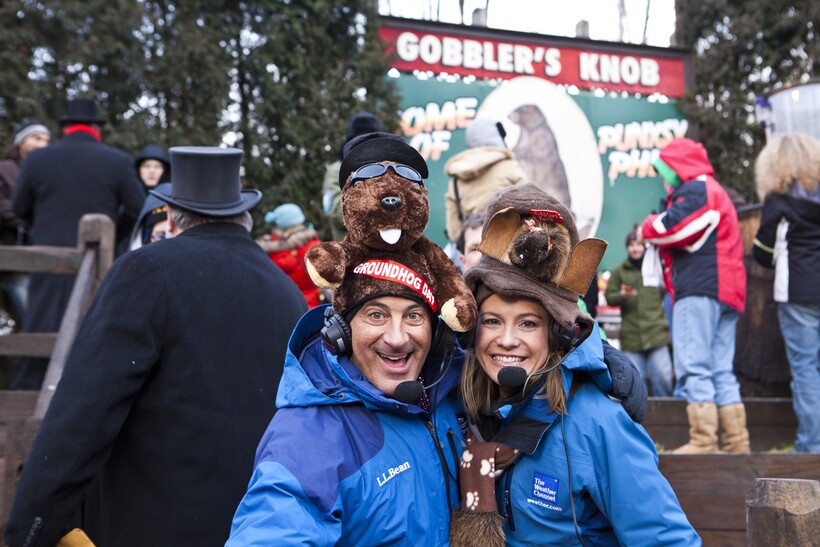
- концерты коллективов;
- игры;
- конкурсы;
- трансляцию праздника на местных телеканалах;
- фестивали еды;
- и, конечно, — наблюдение за сурком.
Некоторые отмечают, что американский праздник похож на русскую Масленицу.
Значение фразы «День сурка»
Что такое день сурка? Это такая ситуация в вашей жизни, когда ваш каждый день схож со всеми предыдущими. Также вы не находите конкретных предпосылок к тому, что в скором времени что-то изменится. По каким признакам можно поставить самому себе диагноз «день сурка»?
- Каждый день в вашей жизни вы делаете одно и то же.
- Вы не получаете удовлетворения от того, что с вами происходит.
- Ваше «существование» целиком состоит из серых красок.
- У вас почти не случается каких-либо изменений, по крайней мере значительных.
В общем, как вы уже поняли, вопрос «что такое день сурка?» несёт в себе мало приятного. Но если вы смогли обнаружить это явление в своей жизни — это еще не повод опускать руки.
Как выйти из состояния «Дня сурка»
Для начала — перестать боятся перемен в жизни, ведь в них чаще всего и кроются самые яркие эмоции и события, которые мы запоминаем на всю жизнь. Вам предложили поехать в путешествие, но коллектив вам мало знаком? Не стоит отказываться, это отличный повод хорошо провести время и познакомиться с новыми интересными людьми. Есть возможность поехать покататься на лыжах, но вы не умеете и боитесь выглядеть глупо? Не переживайте, наоборот это может быть поводом получить новые навыки и яркие жизненные эмоции. Если вы не любите свою работу и не видите в ней достойных перспектив на будущее — смело бросайте её и пробуйте осваивать новые специальности. Также хорошим решением будет найти себе хобби, которое будет вас радовать и заряжать позитивным эмоциями изо дня в день.
Немного о фильме «День сурка»
Знаменитая комедия «День сурка» появилась на большом экране в 1993 году. Главный герой — журналист Фил Коннорс — попал на народный праздник в Панксатони 2 февраля. На следующий день он обнаружил, что на календаре по прежнему 2 февраля. И Филу приходится заново переживать вчерашние события. И снова. И вновь. 3 февраля наступает только спустя много дней, когда Фил решает изменить себя в лучшую сторону. После выхода фильма и появилось крылатое выражение «день сурка», означающее, что каждый день похож на предыдущий, а значит, пора меняться.
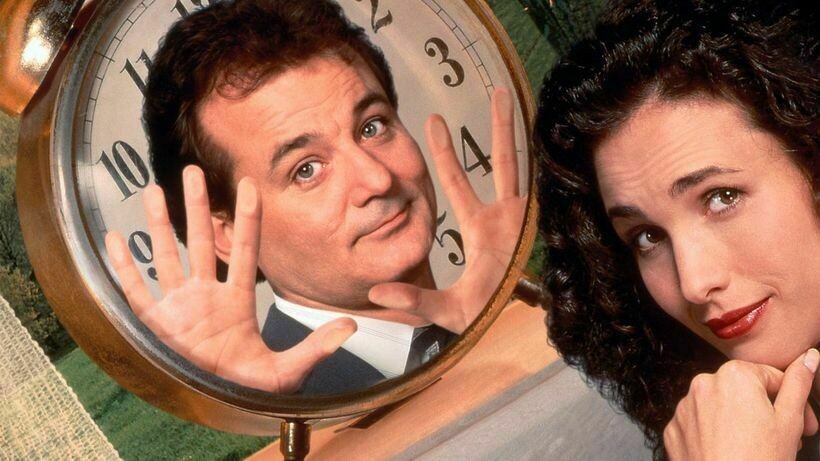
А сурок Фил обрёл армию поклонников во всём мире. Кстати, сурки живут лет 10. А Филу уже должно быть больше 170 лет (первое упоминание о нем зафиксировано в 1841 году). И легенда о сурке-долгожителе активно поддерживается местными жителями.
Источник фото: RG.ru
День сурка — это один из самых необычных праздников во всем мире. Особенно это торжество любят в Соединённых Штатах и Канаде, но россияне также не остаются в стороне. Люди наблюдают за маленьким зверьком и его поведением. Считается, что по действиям сурка можно понять, скоро ли наступит весна. О том, когда отмечают праздник в РФ, сообщает портал «Курьер.Среда».
Это праздничное событие на территории Российской Федерации отмечают 2 февраля.
Впервые торжество стали отмечать в 1886 году в Америке, а сурок, который живет в горах Пенсильвании, стал самым первым официальным «метеорологом». Эту традицию с радостью приняли жители США, а затем переняли и канадцы. Историки говорят, что подобный способ определения погоды существовал и в Древнем Риме, но «общались» люди не с барсуком или сурком, а с ежиком.
Есть и вторая версия — западные христиане отмечали Сретение Господне по григорианскому календарю во второй день февраля. Этот день по многим народным приметам считался показательным, можно было понять, какой будет погода в ближайшее время.
После того, как вышел одноименный фильм «День сурка», праздник 2 февраля стал популярен во многих других странах. Отметим, что именно эта комедия превратила начало торжества в имя нарицательное, а фраза «День сурка» стала означать череду повторяющихся событий.
Приметы, запреты и традиции праздника
Соединенные Штаты и Канада в эту дату проводят множество фестивалей и ярмарок, которые посещают граждане стран и туристы. На таких мероприятиях можно принять участие в интересных конкурсах, купить сувениры и узнать, какой прогноз дал сурок-синоптик. В День сурка есть всего две основные приметы:
- Сурок не видит своей тени и спокойно покидает нору — весна будет ранней;
- Зверек в солнечный день видит свою тень, пугается и прячется в нору — зимовать придется еще шесть недель.
В современном мире одной из главных традиций праздника стал просмотр фильма «День сурка», который вышел в конце марта 1994 года. Главную роль в ленте исполнил Билл Мюррей, а сама картина получила премию BAFTA в номинации «Лучший оригинальный сценарий0».
Запретов у торжества немного, достаточно просто не игнорировать предсказание сурка, не смеяться над ним, а также не быть агрессивным человеком. Это все, что нужно знать о запретах и традициях праздника как в России, так и в США и в Канаде.




